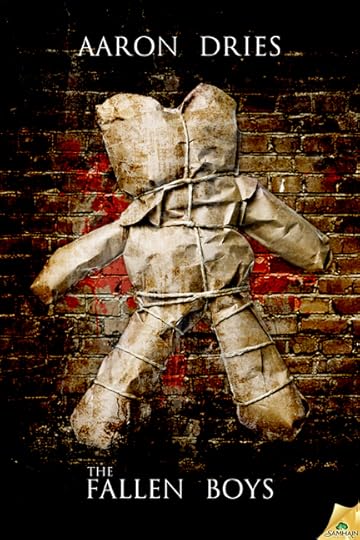Aaron Dries's Blog: Spreading the gore since '84
March 30, 2015
My top 100 films of all time
It's my top 100 (and you can cry if you want to)...
Whilst there's bound to be cross-over, don't read this list expecting the IMDB top 100. My brain is wired in weird and wonderful ways, so it should be of no surprise that this list film crosses the entire spectrum. From childhood cartoons to Academy Award winners. From quiet dramas to screeching horror. It's all here. And it's all me. This Top 100 films of all time list is what all Top 100 films of all time lists should be, though rarely are. It's personal, it's passionate, and it's an honor to share.
So without further ado, let's get things started!
100. The Land Before Time
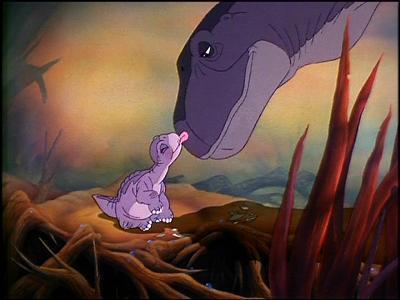
99. Almost Famous
98. Sunset Boulevard
97. Pulp Fiction
96. Zodiac (2007)
95. Festen
94. The Invisible Man (1933)
93. Adaptation
92. Tokyo Decadence
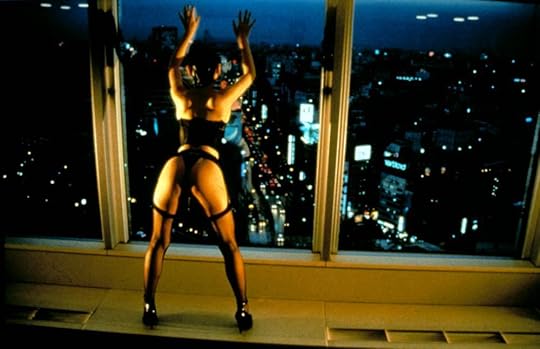
91. Clive Barker's Nightbreed: The Director's Cut
90. I Heart Huckabees
89. Chasing Amy
88. Sleepwalkers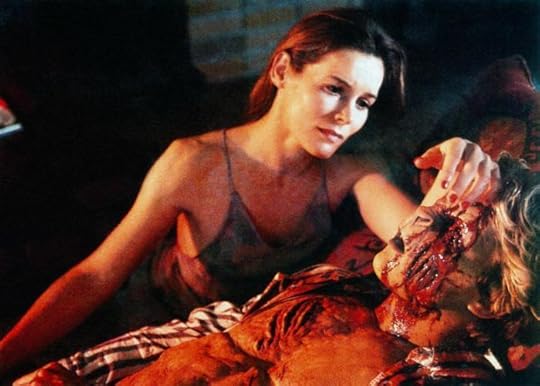
87. Santa Sangre
86. The Neverending Story
85. Toy Story
84. After Hours
83. Mean Girls
82. Army of Darkness
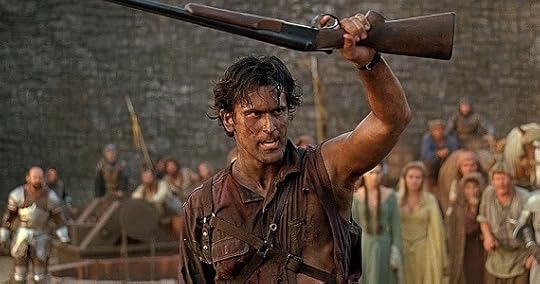
81. Edward Scissorhands
80. The Lion King
79. Bubba Ho-Tep
78. Wes Caven's New Nightmare
77. Deep Red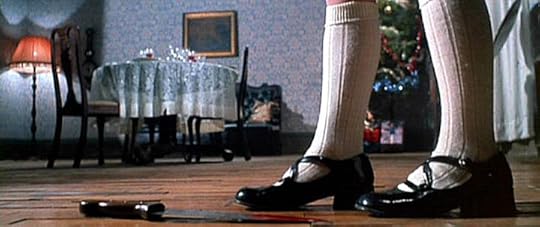
76. There Will Be Blood
75. The Beyond
74. Excision
73. Big Trouble in Little China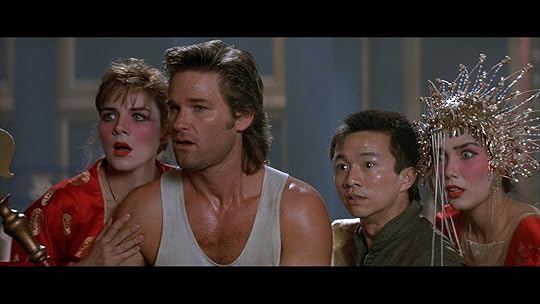
72. Boyhood
71. Paths of Glory
70. Poltergeist
69. Suspiria
68. Kill Bill Vol. 1
67. Dead Ringers
66. Twin Peaks: Fire Walk With Me[image error]
65. Hellraiser
64. O Brother, Where Art Though?
63. Misery
62. Hocus Pocus
61. Bride of Frankenstein
60. The Devils (1971)
59. Fargo
58. Exorcist 3: Legion
57. The Shawshank Redemption
56. Society
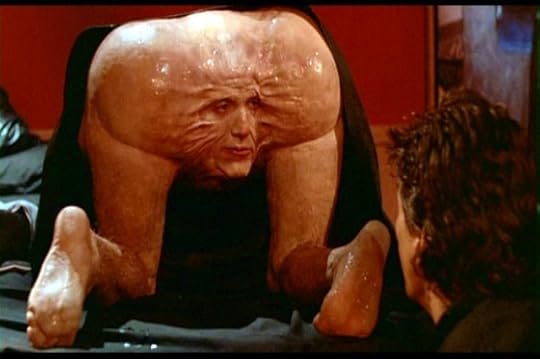
55. Mad Max 2: The Road Warrior
54. Star Wars: Return of the Jedi
53. A Clockwork Orange
52. Alien
51. Rosemary's Baby (1968)
50. 2001: A Space Odyssey
49. Me and You and Everyone We Know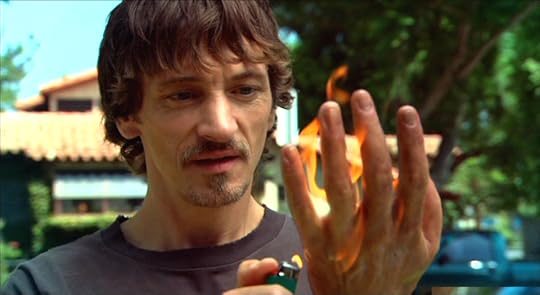
48. The Silence of the Lambs
47. Hedwig and the Angry Inch
46. The Hills Have Eyes (1977)
45. Happiness
44. Holy Mountain
43. Ed Wood
42. American Beauty
41. Lord of the Rings - The Fellowship of the Ring
40. The Lady Vanishes
39. Asylum (1972)
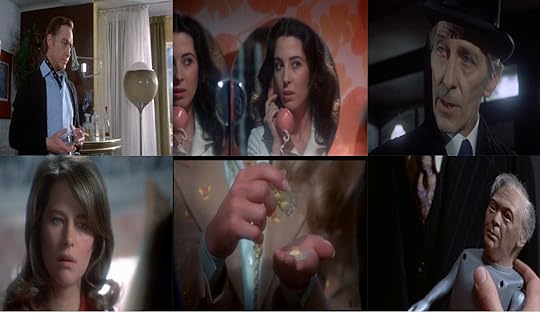
38. Blue Velvet
37. Deconstructing Harry
36. The Mist
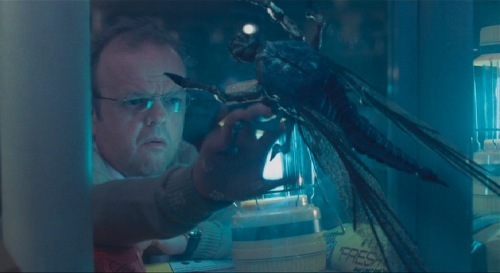
35. Magnolia
34. The Birds
33. Dogvile
32. Escape from the Planet of the Apes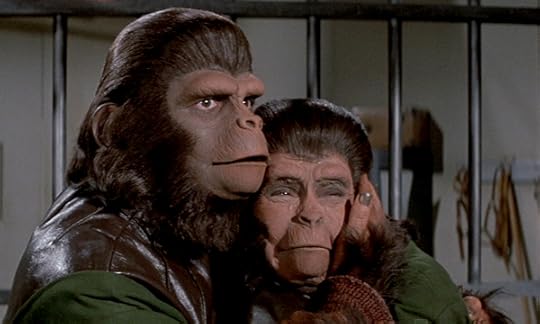
31. Gods and Monsters
30. A.I. - Artificial Intelligence
29. Gremlins 2
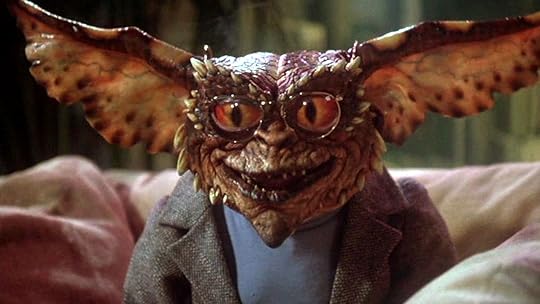
28. Incredible Shrinking Man
27. Battle Royale
26. Dressed to Kill
25. Dawn of the Dead (1978)
24. Audition
23. Dancer in the Dark
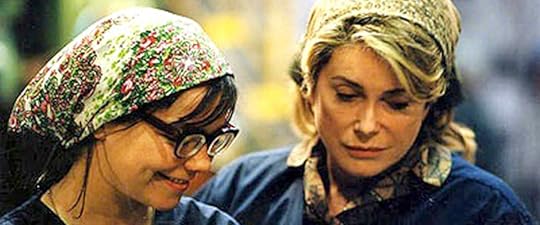
22. Alexandra's Project
21. Once Were Warriors
(Well done, you've made it this far. We're now in the home stretch now...)
20. Halloween (1978)
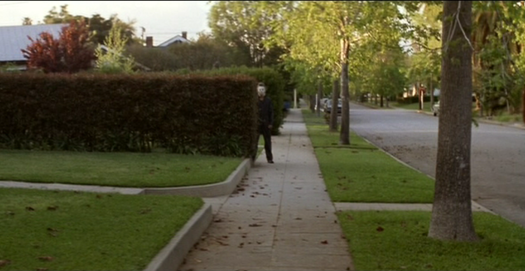
19. Heavenly Creatures
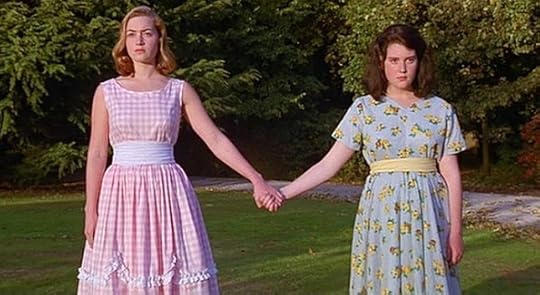
18. The Texas Chain Saw Massacre (1974)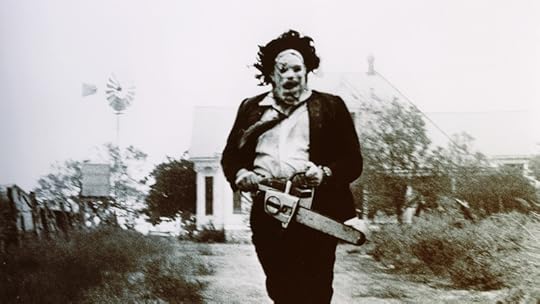
17. E.T. - The Extra Terrestrial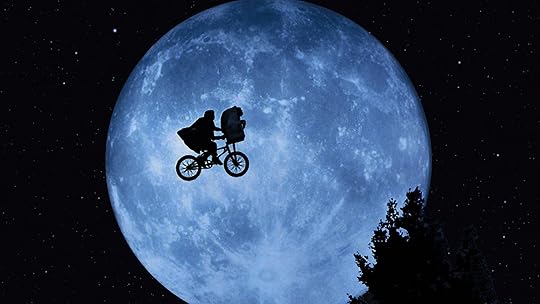
16. The Ninth Configuration[image error]
15. Cujo
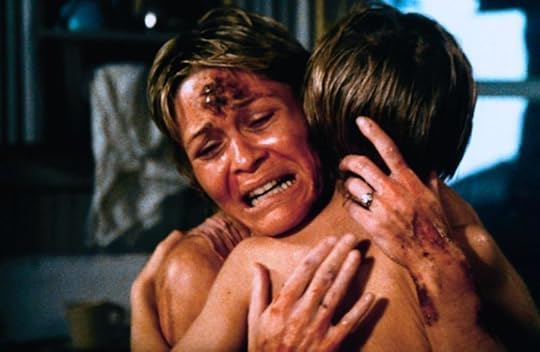
14. Rebecca (1940)
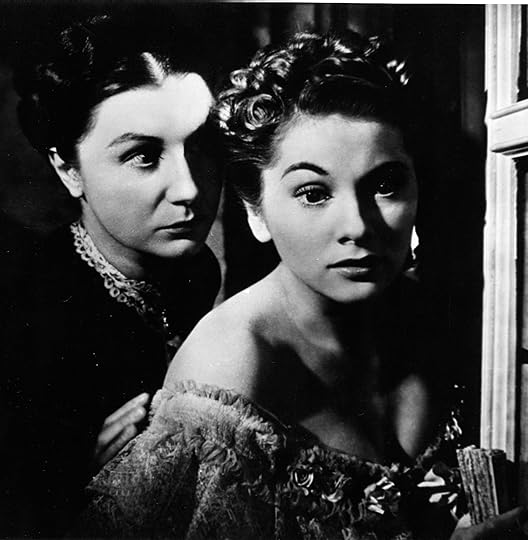
13. Punch Drunk Love
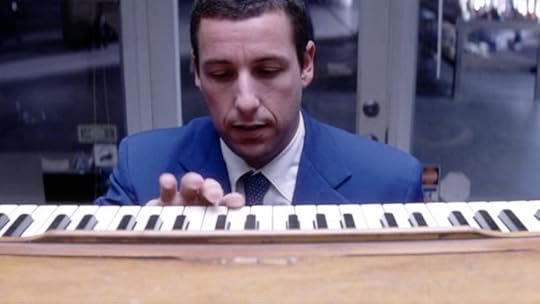
12. Scream
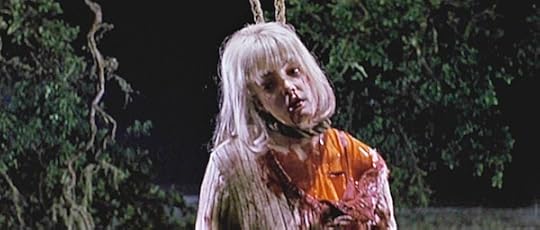
11. Jurassic Park
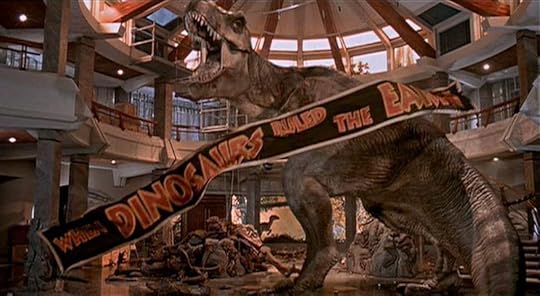
(And now for my top 10 films of all time. It's eclectic to say the least. So here we go).
THE TOP 10
10. Eyes Wide Shut
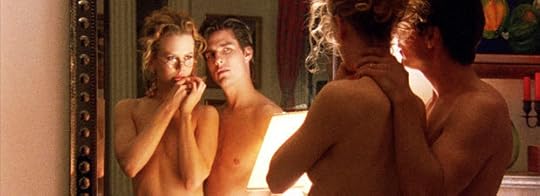
As a teenager, I was all about A Clockwork Orange. The older I get, the Kubrick film that fascinates me the most is Eyes Wide Shut. Elliptical, frustrating, cold, and vaguely threatening, Kubrick apparently did a Bad-Bad-Thing by not spelling out the obvious, or giving the world the sex-romp they wanted, but I think this dreamy and intoxicating film is better for it. Kubrick was a master. He scaled the universe, transcended time, destroyed the world … and yet his swan song was this: a small film about the consequences of truth, as whispered between two loved ones in a cramped bedroom.
9. Muriel's Wedding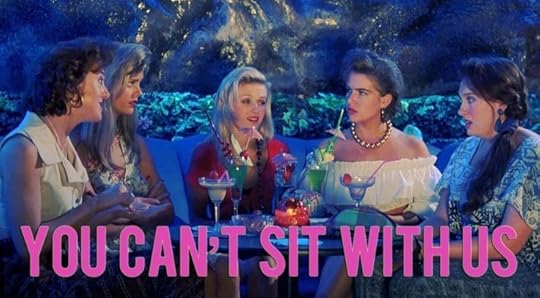
This is the only Australian film to make it into the top ten, which is a shame. It’s also the only out-and-out comedy, too. But its place here is so well deserved. We watch, hopeless, as poor Muriel (a not too distant cousin to Carrie White, perhaps?) dreams of becoming a Dancing Queen, yet struggles to rise above Porpoise Spit’s crushing waves. By turns hilarious and heartbreaking, Muriel’s Wedding is one of the best films this country has ever produced, if not THE best.
8. Elephant
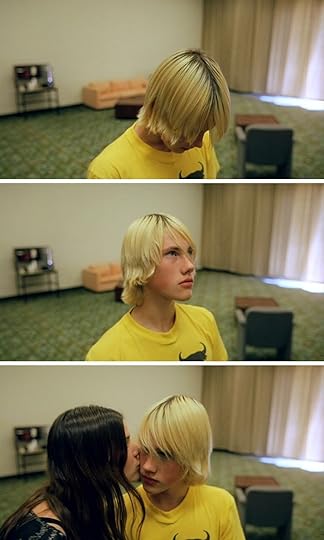
Gus Van Sant’s fly-on-the wall exploration of high school, sexuality, violence, and curiosity is a contemplative gut-punch. And that’s not an easy task to pull off, when you stop and think about it. Set in a post-Collombine world, Elephant floats along like passing clouds threatening lightning at any given moment, the dread as cloying as humidity. Van Sant’s crowning achievement.
7. The Exorcist
[image error]
I stayed up until two in the morning to tape this off television, and even when censored for the masses, The Exorcist still spellbinds. Eventually, I saw the film in its uncut version, and later again, in its extended form, which I prefer, as it re-instates Blatty’s final glimmer of optimism. It holds up remarkably well, primarily due to the strength of the performances. Linda Blair may be what you take away from the movie, but I swear to you it’s Ellen Burstyn who anchors the entire story. Without her, the entire haunted house of cards would crumble.
6. Shortbus

I loved John Cameron Mitchel’s first film Hedwig and the Angry Inch and thought it an almost impossible feat to match. And yet this sophomore effort stepped up to the plate. Big-time. Jubilant, sexy, frustrating and dreamy, Shortbus is a film for all love, all sexualities, all colours. There comes a point when you’re so swept up in the life of the party that you actually forget you’re watching un-simulated sex on screen, all of the flesh melding together and parting in a tide to reveal all of the raw, unedited emotion beneath. Feel like utterly loosing yourself? Catch this bus.
5. Mulholland Drive
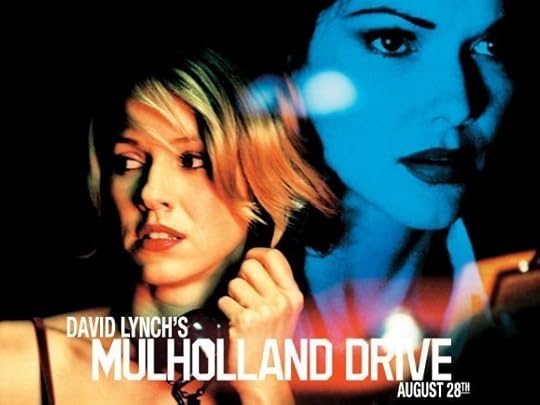
Bizarre and wonderful, David Lynch’s winding and dark road into Hollywood’s heart still makes me wonder and weep. I remember seeing it for the first time at a Sydney with my mother, who I think I dragged along against her will, or surely under false pretences. I remember her verdict: “well, it wasn’t so bad until it went off the rails.” I know for a fact that she’s seen it a couple of times since, despite herself. “And I still don’t get it,” she’s told me. And yet she continues to watch it, trying to piece together a jigsaw that cannot be put together successfully. No matter what theory you’ve got (and I’ve got plenty) … there are those elusive missing pieces, Lynchian cigarette holes of logic through which we have no choice but to journey through, and slowly disappear.
4. Jaws
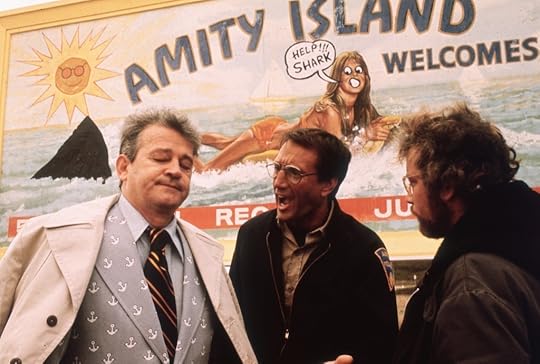
I think I loved Jaws even before I saw it, having seen parts 2, 3, and 4 in advance. I’m not sure why, but Spielberg’s greatest eluded me. It wasn’t at my local video store (I vividly remember being told the VHS tape had been chewed up – how appropriate!), and it didn’t replay on television with the same frequency as its sub-par (albeit wonderful) sequels. And then it finally came on one night – a 9:30 start. I was at my aunt’s place babysitting my cousins. I made popcorn. My heart didn’t stop racing until the following morning. Who would’ve thought that a film about incredibly painful death could make me feel so alive? (Trivia: the main character in my novel A PLACE FOR SINNERS is named after the town the film is set in).
3. Psycho (1960)
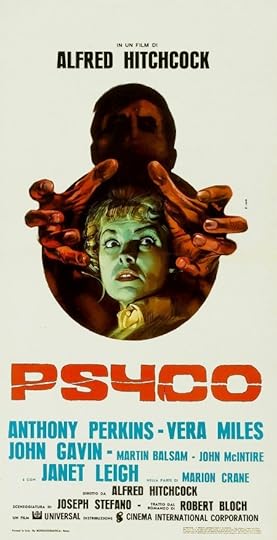
If there ever was a film that has influenced my creative output, it’s got to be this: Psycho, based on Robert Bloch’s great novel, as realized by Alfred Hitchcock. My novel THE FALLEN BOYS is in essence an elaborate tribute to Norman and his proclivity for peeping and pins. Also, having seen it recently at the cinema, I’ll tell you this: the scares still work, as I suspect they always will.
2. The Wizard of Oz (1939)
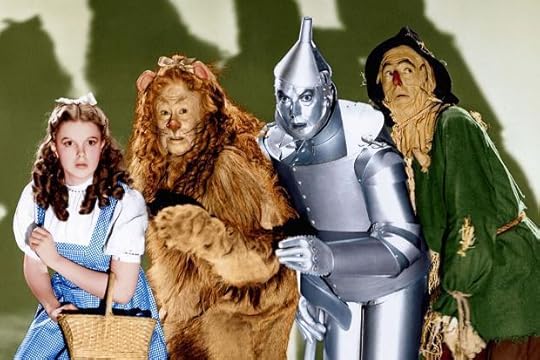
This was the film that I rented from our local video store so many times the owners eventually relented and just gave it to me. Rich, warm, terrifying – these are just some of the words that spring to mind when I think of this film. Yes, I know every word, I know every song. And it’s never stepped into the world of camp, not for me at least, as it’s just pure, unselfconscious heart and soul at 24 frames per second. I’ve referenced The Wizard of Oz in all of my novels, thus far — that’s how deeply its hooks and melodies are stuck in me. And even just writing this now has made me want to dig the Blu Ray off the shelf and disappear over the rainbow one more time.
1. Carrie (1976)
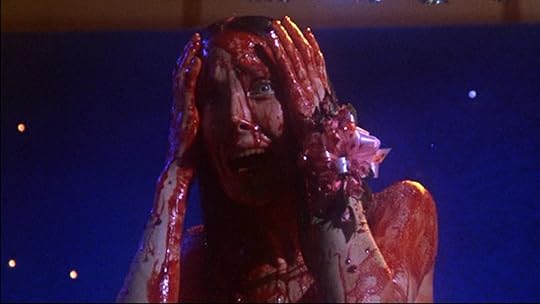
The realization that Carrie was my favourite film of all time came upon my slowly. I’ve seen it so many times I can literally recite it word for word. Like all of the films in my top twenty, despite the repeat viewings, this film’s power has not lessened. And the older I get, the more of myself I see in the film. It’s not nostalgia, per se. It’s retrospect. And that’s frightening. I see all of the bad choices I made as a teenager; I see the bullying; I see how I was used. As we all are, at one point or another. Yet on the other hand, I also see the hope others put in me, the leaps of faith.
I can’t watch Carrie and not get a lump in my throat. It moves me deeply. DePalma’s visual sense, King’s source material – it all adds up to more than the sum of its parts. It speaks to me on my base level: the part of me that wants to be accepted. And that slice of my soul will never go away, no matter how I age, which is why I think Carrie’s spell will never waiver. If anything, I only expect the hold to strengthen, regardless of whether or not they laughed.
So there you have it, folks. What did you think? Are there titles here you hadn't heard of? What are your favorite films? Let me know below.
February 21, 2014
REVIEW: WOLF CREEK 2
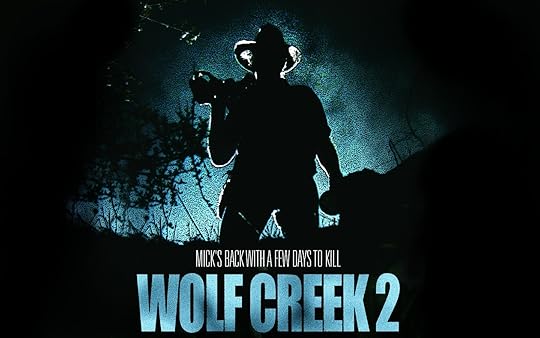
When it comes to dissecting Aussie culture, Greg McLean’s latest illuminates the tropes better than Baz Luhrmann’s massively budgeted attempts. And while I think there’s more to Australia (2005 than most give it credit for, Wolf Creek 2 ultra-effectively dissects issues such as masculinity, the city vs country conflict, and immigration with the most dangerous of tools: a mirror. An important distinction.
Wolf Creek 2 has a plot that is very similar to the 2005 original. Set in the vast Australian outback, we watch as foreigners fall victim to pig-shooter/serial killer Mick Taylor (John Jarratt, reprising his infamous role). One such victim-to-be, is worthy adversary Paul (Ryan Corr — a charismatic alternative to the long-established Final Girl cliché). It’s the dynamic between Paul, the hunted, and Mick, the hunter, which fills the film’s latter (and stronger) half.
Like all good sequels, this film sets itself firmly within the same universe of the original, but smartly avoids telling the same story twice. The original Wolf Creek was a gritty, cinéma vérité-style, Texas Chainsaw Massacre (1974) riff told from the perspective of the victim. This one is different. Its perspective is from that of the villain, and as such, it reflects the villain’s traits, both in structure and style.
Like Mick, Wolf Creek 2 is larger than life. Like Mick, the film does not tremble in fear; rather it confidently flexes muscles primed to squeeze triggers and throats. That this stylistic shift is pulled off is largely due to Jarratt's performance, which shifts from Freddy Krueger-inspired parody to transcendent eeriness with no effort at all.
So… Goodbye shaky hand held camera. Hello widescreen bravado. Goodbye extended prologue establishing the well-drawn characters of potential victims. Say howdy-do to a snappy, visceral pre-credit sequence featuring splattering brains and that oh so familiar, victorious, guttural laugh.
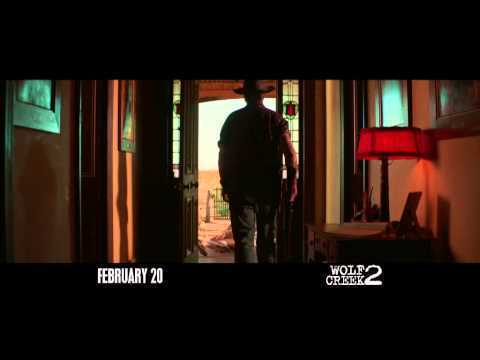
In essence: Wolf Creek was a horror film. Wolf Creek 2 is a Western with horrific elements. And beneath it all is some nice sledgehammer satire. That’s not a bad thing. Also, in a nice ‘influence-echo’, the film actually has an air of Texas Chainsaw Massacre 2 (1986) about it, another film that was smart enough to know that the intensity of the original could not (nor should it) be reproduced and decided to go down the route of black comedy and political satire instead. On top of that, both finales cumulate in bloodied, corpse-strewn underground tunnels. All of this is expertly shot by director of photography, Toby Oliver (Beaconsfield), who makes great use of the widescreen format, filling each shot with the beauty of the outback, not to mention the grime of a lunatic’s labyrinth.
McLean and co-writer Aaron Sterns inject suspense at every turn. Some moments, however, work better than others. The opening is pure shock, which is a fine way to electrify your audience, but it comes at the cost of actually scaring them. On the flipside, the cumulating scenes, usually where horror films fall apart (think of the overlong explanation sequence at the end of Psycho, or the ‘monster’s lair’ conflict in Stephen King’s IT miniseries) is actually the most sweat-inducing part of the film. This is particularly well done considering this is where the satire cranks into overdrive. And this societal reflection is so apt it makes me wonder when the script for Wolf Creek 2 was actually written. It’s so topical it could have been ripped straight from the headlines.
As is the nature of any horror film told from the perspective of the killer, Wolf Creek 2 is not terrifying. Many may find this disappointing, as the drawcard of the original was its almost paralysing scares. But that is not to say it is not involving, because it is. But the scares aren’t the primary drawcard here…
It is the evocation and perversion of the Australian outback.
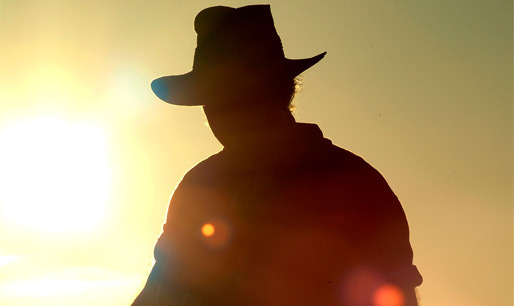
McLean follows in Peter Weirs’ footsteps. This is his Picnic at Hanging Rock (1979), a film wherein the landscape was so threatening it could open up and swallow you whole. There’s also an air of George Miller on display, with its atypical love of the highway as horror-zone ala Mad Max (1979) and The Road Warrior (1981). Other than the Tobe Hooper inspirations, the backbone to the Wolf Creek series, there are also refreshing Spielberg nods in a spectacular truck chase straight from Duel (1971). In addition, there’s further exploitation of the outback farmer myth, as Mick rides his horse into battle, only to step off the saddle to crack his whip in the face of his prey. And again, there is a scene in which the old-fashioned Australian family unit, poor Ma and Pa Kettle, who are living a life off the land, find their utopia destroyed by the savagery of their inverted idolism. During this set-piece, one of Wolf Creek 2’s finest, McLean draws from Sergio Leone, whose stylistic violence was so often about power and domination. The direction, in this regard, is unexpectedly mature. And ruthless. We can't help but watch as all of the stereotypes Australia exports to an international audience come back to haunt us. To stalk us dead.
Put together, these conflicting approaches mostly work. Sure, some of the narrative shifts are clunky, and the first third seems disconnected from the rest, but these are not irreconcilable missteps. Wolf Creek 2 is just too damn assured of itself for nearly anyone with a love of Australian cinema history to dismiss. There’s no hiding its grand and classical cultural ambitions as it ploughs through the stereotyped brochure epitomised in Luhrmann’s post-Australia tourism campaign. But it is passionately un-subtle, which we realise beyond a doubt as the xenophobic Mick Taylor mows down a mob of kangaroos with a semi-trailer in his endless pursuit for foreign flesh. This is actually Wolf Creek 2’s greatest charm.
SCORE: 4 out of 5 slaughtered backpackers.
October 18, 2012
Authors Against Bullying
[image error]
Condolences just aren’t enough.
That’s why I’m telling you that you’re not alone. And I know that’s hard to hear. Sometimes, the pain of loneliness ends up feeling a little like pleasure, which is why it can be so hard to give up.
You’re not alone; take comfort in this fact … But never underestimate how severely you can be underestimated.
I don’t subscribe to that 1950s mentality that children should be spoken at and not listened to. Like many others (but importantly: not all), I believe children should be respected, meaning that cries for help should be taken seriously. And I don’t believe that a child’s loss should make martyrs of their misery. Fifteen-year-old Amanda Todd didn’t ask for that.
All she asked for was help.
… I’m twenty-eight and the spectrum of bullying has broadened since I was a child. Back when I was an overweight, pimple-faced, ginger haired, pale skinned nerd at school, all I had to worry about was getting through the taunts of a select few who refused to accept anyone who didn’t fit into the jigsaw of what they deemed ‘conventional’. And having survived this, I would come home (my backpack always dumped in the hallway, despite the pleas of my mother to do otherwise), watch Zorro or Spellbinder on the idiot box, and then maybe my brothers and I would bury chicken bones in the backyard so we could authenticate that afternoon’s paleontologist training (because what ten-year-old boy doesn’t want to dig up dinosaurs when they grow up?). After all this, post dinner, I’d maybe curl up with the latest R.L. Stine book before bed. Yeah, that was my day in a nutshell.
I didn’t come home after surviving school, and get on the Internet. To my memory, I didn’t hear the delightful cries of the dial-up tone until I was in my senior high … But I remember hearing its murmur. I remember thinking it must be this incredibly liberating place—like a giant town where you could to meet anyone and learn everything. A bookworm’s Nirvana. I was too young to know of the venom in the Internet’s veins. And I didn’t know that the only way to survive that venom was to develop immunity to it.
But I didn’t have to worry about any of this, not back then (now as an adult, the bullies I encounter are those who condescend, over-demand and demean within the workplace, or from behind their pulpits). All I had to do as a kid was get through the school day. All seven hours of it. Simple as that, right?
I wasn’t an unpopular kid. Actually, for someone with my interests (which veered far from the sports field that apparently defines what it is to be ‘Australian’) I got off pretty light. The majority of the cool kids liked me. I guess it was because I had a sense of humor, plus all of my classmates knew I hosted awesome sleepovers (I always knew of some R-rated horror movie that we could watch together—A Nightmare on Elm Street was a sure-fire hit).
I remember after one such event, one of the popular guys in my class came and sat next to me on the aluminum bench beneath our school’s gigantic peppercorn tree. “Hey Aaron,” he said with a smile. His lunch was on his knee. “I thought I’d come and hang out with you today. And guess what—I’m going to sit like you do!”
I wasn’t even aware that I sat a particular way, but I guess I’m glad I did. Take your complements wherever you get them, folks.
However, not all days were quite so pretty. In primary school, a guy who would go on to become a very successful business-owner would sporadically bully me. I recall thinking, “if only he was consistent … If only he did it every day, my guard wouldn’t drop and I wouldn’t be lulled into a safe sense of security.” And even worse, he always seemed to make up for lost time when he decided to enforce the hatred he had for the world, on we, the select few honored enough to elicit his attention.
On that particular day, he chased me across the schoolyard. I ran up the jungle gym, which was an old wooden structure in the shape of a ship. I scrambled up the rope ladder. He was right on my tail. He grabbed my ankle and I swung around and kicked him square in the chest. Bad idea. His anger only made him faster. He was on me in a second. I remember the way my head slammed against the ship’s wooden deck as he ploughed my face with punches.
Thump-crack.
Thump-crack.
Coppery blood from a cut inside my mouth. Dust in my eyes. And so on.
There was another time, in the fourth grade, when I was walking along a balancing beam at the very far end of the school grounds. Recess was almost over and at any moment, I expected to hear the bell ring, summoning us back to class. It was summer and there were bushfires that year; everything was swathed in grey smoke. I was walking the length of the beam when I felt hands on my ankles. Pushing me.
The pusher was a not-particularly nice girl who lived at the end of my street. I don’t know why she hated me. Perhaps it was because I sometimes heard screams coming from her house.
I fell and hit my head on the beam. When I opened my eyes, the schoolyard was empty. I dragged my sorry ass into the classroom, only to be yelled at by my teacher. I told her I was hurt, that there was pain in my neck and my headache was so bad I couldn’t see straight. She didn’t believe me. Not until the tears started to flow half an hour later.
These were rare, painful splinters in my adolescence. But rare is operative word here. I was not systematically punished by my peers, thank God; I was never blackmailed or emotionally crushed, day-in-day-out.
Just every so often, the way I spoke; walked; the way my interests led in an alternative direction to those who think theirs’ is the only way; when kids realized that yeah, they’re right, my thighs were bigger than theirs … Only ever so often, on days when these factors came into play, would I snag. And the splinter would dig deep.
I can understand how people survive systematic abuse and bullying. Which, I guess, is why I understand why people give up. That venom in the veins that I mentioned before … immunity searched and often prayed for. It sadly only comes to some. So I get it.
That’s why the stigma of nooses, of blades, the temptation of the bridge that seems almost designed to be leapt from, will never go away. Not until things change. I just don’t know if it ever will. As a result, it is we who must change, educate and take a stand. Author and reader alike. There is not a lot we can do … but at the very least, we can unanimously share our stories. Voices Carry, as the old ’Til Tuesday song goes, but only if people are willing to listen. That’s why there’s power in numbers.
All of this I understand. But I still don’t get ignorance.
Modern day evil breeds modern day cowards, and the Internet has given these people the means they so desperately require. Welcome to the 21st century schoolyard, folks. Only there are no teachers watching over the students, nobody waiting behind a desk for your plea to become legitimate once the tears start to flow and the bruises rise to the surface of your skin.
Listen. Always listen.
For as long as there have been bullies there have been victims. And being bullying is not a rite of passage; it’s a crime. People need to understand that not everyone is strong. Yes, some people need help, and yes, that’s totally fine. Humans can be frail as the bodies we are wrapped up in, we break and whither and are always susceptible to punches, be they physical or psychological.
So listen. Always. Help when you can.
These collective blogs are not about preaching; they are about uniformity. Strength. We’re not here to build a wall that will protect children from the world, that forces them into safe houses from which they are never allowed to leave. We’re here in the hope that—if there are enough of us—we can adapt the architecture of that house and its surrounds. And that those who are hurt by the cruelty of the selfish and the cowardly, need not live alone.
But the important thing, above all else, is that they live.
* * *
Authors Against Bullying contributors.
Please check out their blogs - comment, contribute and spread the word.
October 4, 2012
Interview with author, Brian Moreland
It’s an absolute thrill to have Brian Moreland as my debut guest interview. His first two novels, Dead of Winter and Shadows in the Mist are now available through Samhain Horror, and both are excellent reads. Aside from being a great writer, whose work has been unanimously praised by the likes of Douglas Preston, James Rollins and others, he’s a super nice guy—I’m honored to have him here.
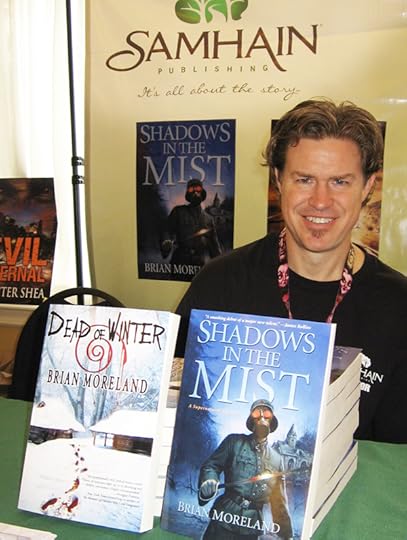
Brian, I think a good place to start is for you to introduce yourself and to tell us a little about your new Samhain release, Shadows in the Mist.
Hi, Aaron, and thanks for having me on your blog. I write historical horror novels and supernatural thrillers. My first novel, Shadows in the Mist, is about an Army platoon leader who has seen a lot of death during his tour, from battling Germans in North Africa, Italy, and Germany. Lt. Jack Chambers has lost so many men that he’s earned the moniker “Lt. Grim Reaper.” Now he’s down to his last few men who call themselves “the Lucky Seven” because they’ve survived many battles with Lt. Chambers. All he wants now is to get his men out alive. To earn an opportunity to send them home, Chambers volunteers his platoon for one last secret mission: lead a team of commandos to a Nazi bunker. What Chambers and his men don’t know is something dark and evil is waiting for them in the foggy woods.
Your literary track record reads like an independent author's dream come true. You started out self-publishing Shadows In The Mist, only to have it picked up by a major publishing house. It now lives on at Samhain Horror. How did all this happen, and how does it feel to know that an entirely new audience is experiencing the novel?
It’s true. I originally self-published my first novel. After years of rejections from literary agents and playing the waiting game, I decided to put the destiny of my writing career into my own hands. So I formed my own small publishing company. I put a lot of effort into producing a book that would compete in the marketplace. I hired a quality editor to help polish my writing and work out any issues with the plot. I hired a top-notch book cover designer and an award-winning illustrator, Les Edwards, to paint the cover. Together, my team and I produced a book that stores would stock. I also got it listed on Amazon and BarnesandNoble.com.
My next challenge was that I was an unknown author. So I was persistent about getting the book out to reviewers to expand my audience. I did a small book tour and hired a publicist to get me into newspapers. I also got friends with large email lists to send out email blasts, telling their friends to go out and buy my book. The campaign was a success. Shortly after I launched the book, Shadows in the Mist hit #1 on Amazon.com’s Bestselling Mysteries & Thrillers list. At that time, The DaVinci Code was #4. I believe that was due to aggressive pre-pub marketing and an eye-catching cover. I entered the book in the 2007 Independent Publisher Book Awards. It won a Gold medal for Best Horror Novel. All of these successes led to me getting a literary agent and she pitched my book to Berkley/Penguin. They bought the rights and my novel went from being a self-published trade paperback to a mass-market paperback stocked in stores across the nation. Selling my book to a large New York based publisher was my ultimate goal all along. It really changed the game for me. Shadows in the Mist also got published in Austria and Germany under the title Schattenkrieger, which means “Shadow Warriors.”
After three years with Penguin, I eventually got the rights back to Shadows in the Mist. By that time I had already sold my novel, Dead of Winter, to Samhain Horror. When I told my editor, Don D’Auria, that Shadows in the Mist was available again, he offered me a contract to re-release it under the Samhain Horror label. I was thrilled to see it come out again with its original cover in September 2012. I’m excited to share this novel with new readers
[image error]
Has the manuscript evolved or changed with all of these different versions?
Yes, each time I worked with a new editor, I got the opportunity to improve it, based on reviews and feedback from fans. With this latest version, I tightened the beginning, eliminating some chapters I felt slowed down the story. I also reworked some of the dialogue between the soldiers, since I’ve gotten better at writing dialogue. I’m really happy with the Samhain Horror version.
How did Dead of Winter land at Samhain?
My agent and I were trying to find a good fit for my new book. I had finished Dead of Winter in November of 2009 and was eager to sell it to a publisher right away. That’s how I feel after finishing a novel. I just can’t wait to share it with readers. But in 2009, publishing houses were shuffling their editors like Vegas dealer shuffling cards. My agent was afraid my book would get bought up and then lost in the chaos, so she told me let’s wait it out. It was tough to do, but we held out from submitting my book for over a year. I’m glad we did, because we were ready and waiting for the right opportunity. And then in January of this year my agent told me that Leisure Books was dissolving their horror line and that their editor, Don D’Auria had moved over to Samhain Publishing to start up a brand new horror line called Samhain Horror. Don wanted to start the line in October 2011 and was looking for submissions. We submitted my book within about two weeks of Don starting his new job. My agent sold me on Don, saying he was a legend in the horror business. I hadn’t heard of him, but I did a little research and discovered that he had been the editor for many of my favorite authors—Brian Keene, Richard Laymon, Ronald Malfi, and Jack Ketchum, to name a few. On his blog, Brian Keene wrote a post about how much he loved working with Don D’Auria. I flipped through a dozen books by Leisure authors and read the Acknowledgements. Again and again, I kept seeing Don’s name being praised, many describing him as the nicest editor to work with. That sold me, so I told my agent let’s submit Dead of Winter to Don at Samhain. Less than 30 days later in February, my agent called back and said that Don loves my book and wants it to be one of the first books to release in October. I was so excited. My first novel I had to wait over a year to see my book in print. With Samhain, my novel released eight months after we concluded the book deal. And working with Don has been a dream. Like everyone says, he is the nicest guy and very diplomatic in his style of editing. He made some great suggestions on how to improve my novel while keeping most of the book in tact. With Don and Samhain, I definitely feel like I’ve found a home to publish my future books as well.
As you mentioned, Don is a horror heavyweight. What's your collaboration process like with him?
Working with Don has been very easy for me. Since I’ve met him a couple of times in person, we have a great rapport. He’s just an all-around nice guy and very positive and encouraging. During an edit he’ll send me a Word Doc of the manuscript with constructive notes on what he recommends I cut or expand. Then I’ll go through it and make the corrections and write a paragraph here or there if I need to explain something that Don thought wasn’t clear enough. Mostly it’s been minor changes that take less than a day to fix. The first edit is also my last chance to add any new writing to the book.
Then I send it back and a copy editor goes through the manuscript for grammar, punctuation, and consistency. An example: in Dead of Winter I sometimes I had capitalized the word “Devil” and sometimes I wrote it as “devil.” The copy editor pointed out that I needed to choose one and stick with it throughout the book. During the second edit, I approve the copy editors suggestions and then send it back. This takes me about 3-4 hours tops.
Next, the book is typeset for print and ebook versions. I get to see the book one more time before publication to make sure the final version looks polished. I really enjoy the editorial process, watching the transformation of a story on a computer screen to a finished book with cover art.
[image error]
As a writer, how often do you hit a wall in your manuscript? Have you ever felt dwarfed by the enormity of it all, especially when starting out? Also, do you plot your novels in advance or do you intuitively write your way?
So far, I’ve hit a wall on all three novels that I’ve written. Writer’s block is just something I’ve had to deal with and push through. With each of my novels, I’ve gotten stuck for a period of months until I finally got back into a writing groove and figured out where to take the story. I loosely plot my novels with a general idea where I want to take it. I get visions of upcoming scenes and write toward them. Mostly, I’m an intuitive organic writer and I discover the story as I write it. That’s what makes it fun, is the characters are always surprising me with the actions they take. My first three novels all have monsters in them and they aren’t fully developed until I’ve written several drafts. The monsters I create in the beginning usually evolve into something I hadn’t planned when I was plotting the story.
Growing up, was there a horror novel or film that really sparked your passion for the genre? If so, what was it, and how did it change you?
I was brought up watching old black and white horror movies with my Mom, who’s a big horror buff, so I thought monster movies were super fun at a very young age. The two movies that impacted me the most and scared me the most are the original Alien and Prophecy (1979 version). Those two movies raised the bar for how much a good horror movie can scare you. While many of the earlier films had been campy, Alien and Prophecy maintained a dead serious tone throughout and focused on developing characters that had depth. When I write, I always aim to re-create the emotions of terror and fun that I felt when watching those two films. Other movies that I enjoyed early on were The Exorcist, The Shining, Horror Express, and John Carpenter’s The Thing.
[image error]
You've said in the past that you're an author, adventurer and world traveler. Has travel changed the way you write? Have you ever been to a place, enjoyed the vibe and been inspired to write about that locale?
I think world travel has expanded my awareness to other cultures, other ways of thinking. My research trips to Europe definitely influenced the writing of Shadows in the Mist, which takes place in Belgium and Germany. I spent a couple days in Heidelberg, and love that town so much that I decided to include a couple scenes there in my novel. I’ve also been on a writer’s retreat in Rome and wrote a short story set there while I was staying in Rome. That was a cool experience. Also, my trips to Seattle and British Columbia, Canada inspired me to base my third novel, The Devil's Woods, up in the Pacific Northwest.
In addition to being an author, you're a video editor in Texas. Has working in this industry helped you with your writing process, perhaps from a narrative perspective? Is video a twin passion? Have you made any short films over the years, etc?
Yes, editing documentaries and TV commercials have taught me how to tell stories visually. I’ve been editing videos for over 20 years. It’s been another creative outlet for me and a great way to pay the bills while I’ve been building my career as an author. I have edited a number of documentaries for producers, plus I wrote, produced, and filmed a WWII documentary about my grandfather.
So Brian, what really scares you, and has this fear ever been featured in your novels?
What scares me most is the idea that a killer is inside my house, creeping around in the dark. Sometimes I hear things that go bump in the night and I feel fear that someone is sneaking up with a knife. So far, this serial killer hasn’t shown up in my novels. Most of my horrors have been based on historical events. I do feel for my characters and feel genuine fear and adrenaline when I put them in dangerous situations.
What do you ideally hope readers take away from your novels, especially Shadows in the Mist?
I write for the fun of it, so mostly I want readers to have a fun time, like riding a wild roller coaster ride and enjoying it so much they tell their friends to ride it.
So what's coming next?
This past summer I completed my third novel, The Devil’s Woods. This is a modern-day novel about a haunted Cree Indian reservation up in British Columbia, Canada. Something evil in the woods has been abducting people for over a century, and now a couple of brothers will go into those woods in search of their missing father, an archaeologist who disappeared while on a top-secret expedition. This is probably my most action-packed novel yet with plenty of terrifying thrills. Samhain Horror has already picked it up to release in December 2013.
Now, I’m switching gears to write novellas, so I can release a couple of shorter works in between my next two novels. You know the drill, Aaron. Once you finish a book, you have to keep pumping out more fiction to keep your fans happy.
I hear you! Well, thanks so much for joining us here at the blog, Brian!
Thanks so much for having me as a guest on your post, Aaron. I’m a huge fan of Australia. I backpacked across your country back in 2000 and had one of the best times of my life. Cheers!
* * *
Brian Moreland writes novels and short stories of horror and supernatural suspense. His first two novels, Dead of Winter and Shadows in the Mist, are now available. His upcoming novel The Devil’s Woods will release December 2013. He loves hiking, kayaking, rock climbing, and dancing. Brian lives in Dallas, Texas where he is diligently writing his next horror novel. You can communicate with him online at www.brianmoreland.com, on Twitter @BrianMoreland, Facebook, through Goodreads, Brian’s Horror Fiction blog or at Coaching for Writers blog.
October 2, 2012
What it feels like to be on the eve of your book release
So here we are...
[image error]
You work for months on end; debate over sentences; cry and sweat over the tiniest editorial decision ... and it all boils down to this.
Will people like your work, or will it be hated?
Will you offend, or will it be met with little more than casual indifference?
Well, I've rolled the dice and the lives I typed into existence —in the middle of the night, in a rush before work and in those never long enough lunch breaks— are now in your hands.
THE FALLEN BOYS ... has fallen. And I'm terrified. Moments like this, you're reminded just how thin one's skin really can be.
Yeah, even horror authors bleed.
Click on the book cover to learn more...
September 23, 2012
The Fallen Boys excerpt
July Twenty-Eight, 2007
The house was a moonlit carving in the dark. There were no chirping crickets, no birdsong—just winter silence. The sigh of trees. Stacy Norman slept inside, unaware of her role in The Forgiveness. She’d been chosen because she appeared innocent, but she would suffer because she’d committed the unpardonable crime of kindness.
Her murderer had appeared at her doorstep two months earlier, asking if a particular family lived there. Stacy had smiled at him and told the tall, deep-voiced man no. “Not much help to you, am I? Good luck, though,” she said, and closed the door, catching a quick glimpse of his smile.
This was the first of three visits he would pay to her house. The second was to scout for hiding places, surveying turns and locating the stairs, accumulating all the information he would need to make the third visit a simple, problem-free affair.
A breath of air through the house, coming from an open window somewhere—it had nothing to do with their entry. Stacy’s murderers had used the key under the doormat, which they had discovered on visit number two. Stacy would suffer because she was kind, but she would die because she was trusting.
The tinkle of ladles, suspended from the kitchen range.
It was a small, rented house on the outskirts of Preston—redbrick exterior and shingled roof that trembled when the winds blew hard. It was a long commute to work at the architecture firm in Seattle, but Stacy knew it was worth it. There in Preston she had privacy and silence, which was enough for her.
She used to be afraid of living alone but not anymore. The solitary life grew more and more inviting with each passing year, loneliness wearing thin. She didn’t own the little redbrick house, but that was okay. Renting taught her the value of patience, of working towards what you want. One day she would live in a home that she herself had designed, paid for and was proud of. It, too, would be on the fringe of a city surrounded by trees. And silence. Just the way she liked it.
Clocks ticked in the living room. Photographs of Stacy’s family back in Maine lined the walls, faces trapped under glass. A dog-eared copy of Even Cowgirls Get The Blues was bent over the arm of a chair. She was fifty pages from finishing.
Her diary sat on the desk in the study, an eagle feather marking her place. Her father had slipped it into her suitcase the day she had left home to study in Seattle. That had been six years ago.
"Danny stayed over last night, read one entry. At first I didn’t want him to, but I gave in. Not to him, but to my damn hunger. I know that sounds stupid. Hunger. But I don’t know any other word for it. I’m not making excuses—it was nice. He was rougher than I like but what the hell, right? He made me coffee in the morning. I think I’m falling hard. I don’t know if I want that."
Stacy Norman, the pretty architect who walked the homes of others in her mind, who no longer feared the dark. Stacy who knew that time was short but life was long—that it was okay to be in love, but dangerous to fall. Stacy Norman slept with the knowledge that the world would be the same tomorrow: hard and lonely. She could live with that.
The two men were under her bed. They knew what time Stacy returned from work, what time to hide.
Once her breathing had slowed and sleep had snatched her away, they crawled out from under their hiding spot, Stacy’s gentle snores the soundtrack to their achievement. Their hearts were beating fast, excited. A little frightened.
Stacy was their first.
Not a fingerprint was left behind; there were no stray hairs curled up on the floor. Not a trace. Just their heavy imprints on the carpet, disappearing in slow motion. They were careful. The musk of sweat-on-dried-sweat radiated from them. They both needed to piss.
Their breathing in the dark.
The man who had knocked on Stacy’s door and asked about the family was tall and thin, but full of wiry strength. His comrade was short and solid, a little overweight. Fitting under the bed had been a struggle. The tall man straightened up, looking enormous below the room’s low ceiling, stepped forward and flinched when his kneecap popped. The sound shattered the silence. Whatever control they thought they had, disappeared.
Stacy opened her eyes, bolted upright, the mattress creaking under her weight. She wasn’t afraid. The old house groaned at night and the trees outside often played music against the gutters. When she’d first moved in, such sounds would send her running from room to room, armed with a hand-me-down frying pan and her cell phone, searching for intruders who were not there. True, Maine had its fair share of trees, gutters, old redbrick houses—and intruders too—but this was the city. Her parents had cautioned her about home invasions and suburban drug crime in their thick, New England drawls. So when she heard those sounds in the night she often heard their voices too.
"Stace, you got to keep the house bolted tight. Tight as a robin’s asshole."
“Jesus, Dad!” They had laughed.
"Yessum, always ask who’s knocking before you go and open up that door."
“Okay, Mom.”
"Maybe we should get you a gun for Christmas."
“Ha, yeah right. There’s a spirited idea. No thanks, I think I’ll settle for the usual Sears socks and Barnes & Noble gift cards if that’s okay with you.”
Once Stacy had learned the intimate noises of her new home, her decision not to get that gun and to leave that spare key under the back door mat was a very deliberate one. She refused to live in fear anymore.
Stacy Norman would die because she was proud.
In the dim light she saw two white faces bleed out of the darkness. One smiled and the other looked sad. In the fleeting moment between seeing them and the pinprick stab of the needle in her neck, she recognized the faces for what they were.
Greek dramaturgical masks.
Comedy and Tragedy.
***
Five days passed. In North Bend, near the Snoqualmie region in upper Washington State, the shorter of the two men walked out of the house and dropped to his knees. He dug his fingers in the lawn, churning soil until its scent ran sweet. All of his life had been spent either tending to the land or farming animals. The smell of earth was home to him. He was gasping, eyes red from crying.
The trees shivered in the wind, their uppermost branches scratching at the grey belly of the sky. It was a bitter morning.
He was dressed in a bloodied apron, his cheeks smeared with grime.
A few minutes passed by and he heard the rear screen door slam behind him. Slow, deliberate steps drew close. He heard singing, soft and out of tune.
“‘Got me a wayward girl, cute as a bee. See-sawin’ across the universe and ending up with me…’”
The footsteps stopped behind him and the short man felt someone touch his shoulder. It was a soft, smooth hand, one which hadn’t spent its life tending to fields and farms. Rather, other more delicate matters. Now they both had calluses. They had been working on the girl for five days straight.
“‘…Packed our bags in two battered cases. Shot out of town past a sea of shocked faces…’”
There wasn’t enough light in the yard for the sun to cast the tall man’s shadow, but his friend, still on his knees, felt it over him anyway. They stood that way for some time, the tall man continuing to sing. Soft rain started to fall.
“‘…Down a road leadin’ home, just me and this girl. Who travelled the universe so I can show her my world…’”
Morning cartoons blared from inside the tall man’s house. There were no more screams.
“‘…Where people ain’t happy with the luck of the draw. Where the sick and the sad have drawn up next door. My old street ain’t a street no more. Just a place for the mad to live without law…’”
Stacy had been a little lamb, a thin mess of blood and bone wrapped in a woolen sweater. The tall man stopped singing and smiled. His tongue slid over his lips—they were dry and broken. His body was alive with tingles. He even felt dizzy.
Stacy.
He wanted to say the name out loud but didn’t dare. She was an architect, just like him. He had redesigned her for his purposes, for The Forgiveness.
Her name had a texture, a flavor to it, innocent but stern. Chocolate turning to charcoal.
Phlegm rattled in his throat and he forced the sticky wad down.
The two men were surrounded by trees, which didn’t judge or stare. This was the glory of inanimate things—you could always escape from them. People were harder. In a way, the trees were their allies. They could conceal certain things. Even them. They would have to be careful.
Rats swarmed among the bushes at the end of the yard. The glimmer of black eyes, tawny fur camouflaging with the deadfall. They chirped and squealed in their high-pitched way—it was painful to hear. Stacy’s cries had been easier to listen to; the tall man didn’t know why. Perhaps it was because he was grateful to Stacy for her sacrifice, and for the rats he felt nothing but disdain.
Vermin—disgusting little things. Those bastards could chew through anything with their razor teeth, and worse, they were too stupid to fear the traps he’d set, or the poisoned bait he left in the dankest corners of his house. He could hear them scurrying behind the walls at night, so close they might have been chewing inside his head. He had no idea how they had gotten in.
Rats were sneaky.
The tall man’s hands weren’t shaking because of the cool, morning weather. They shook because he was excited. He could still remember the number of eyelashes Stacy had, and how they had felt in the hollow of his palm after he’d plucked them out. One by one.
“She suffered,” said the shorter, more solid murderer. His breath smelt of nicotine gum. Of the abattoir.
“Yeah.” The tall man had a faint Southern lilt to his voice, softened by his years in Washington State.
“I never thought you could feel so downright horrible.”
“Yeah.”
The taller man handed his friend a cigarette and a fifty-cent lighter that he’d bought at Ken’s Gas and Grocery in town. He didn’t smoke himself and had bought the Camels because he knew his comrade, his friend, would need them. Today more than any other time.
Bloody, soil-stained fingers held the cigarette over a wisp of flame. The shorter man spat out his gum and took a drag. He felt his lungs fill with smoke, held it. The tingle that reminded him of what a fool he’d been to quit in the first place. The short man paused and looked at the rats among the trees, waiting for nightfall, and exhaled. He thought of his wife back home in her bed. His knuckles hurt. Arthritis.
“Don’t worry,” the tall man said in his muddled accent. He lifted his hand and swatted a mosquito. A red star in the palm of his hand. He should have worn the bug dope, it was that time of year. “Next time will be less messy.”
***
The Fallen BoysAaron Dries
September 19, 2012
The Fallen Boys (excerpt)
Prologue: An Evening in Washington State
July Twenty-Eight, 2007
The house was a moonlit carving in the dark. There were no chirping crickets, no birdsong—just winter silence. The sigh of trees. Stacy Norman slept inside, unaware of her role in The Forgiveness. She’d been chosen because she appeared innocent, but she would suffer because she’d committed the unpardonable crime of kindness.
Her murderer had appeared at her doorstep two months earlier, asking if a particular family lived there. Stacy had smiled at him and told the tall, deep-voiced man no. “Not much help to you, am I? Good luck, though,” she said, and closed the door, catching a quick glimpse of his smile.
This was the first of three visits he would pay to her house. The second was to scout for hiding places, surveying turns and locating the stairs, accumulating all the information he would need to make the third visit a simple, problem-free affair.
A breath of air through the house, coming from an open window somewhere—it had nothing to do with their entry. Stacy’s murderers had used the key under the doormat, which they had discovered on visit number two. Stacy would suffer because she was kind, but she would die because she was trusting.
The tinkle of ladles, suspended from the kitchen range.
It was a small, rented house on the outskirts of Preston—redbrick exterior and shingled roof that trembled when the winds blew hard. It was a long commute to work at the architecture firm in Seattle, but Stacy knew it was worth it. There in Preston she had privacy and silence, which was enough for her.
She used to be afraid of living alone but not anymore. The solitary life grew more and more inviting with each passing year, loneliness wearing thin. She didn’t own the little redbrick house, but that was okay. Renting taught her the value of patience, of working towards what you want. One day she would live in a home that she herself had designed, paid for and was proud of. It, too, would be on the fringe of a city surrounded by trees. And silence. Just the way she liked it.
Clocks ticked in the living room. Photographs of Stacy’s family back in Maine lined the walls, faces trapped under glass. A dog-eared copy of Even Cowgirls Get The Blues was bent over the arm of a chair. She was fifty pages from finishing.
Her diary sat on the desk in the study, an eagle feather marking her place. Her father had slipped it into her suitcase the day she had left home to study in Seattle. That had been six years ago.
Danny stayed over last night, read one entry. At first I didn’t want him to, but I gave in. Not to him, but to my damn hunger. I know that sounds stupid. Hunger. But I don’t know any other word for it. I’m not making excuses—it was nice. He was rougher than I like but what the hell, right? He made me coffee in the morning. I think I’m falling hard. I don’t know if I want that.
Stacy Norman, the pretty architect who walked the homes of others in her mind, who no longer feared the dark. Stacy who knew that time was short but life was long—that it was okay to be in love, but dangerous to fall. Stacy Norman slept with the knowledge that the world would be the same tomorrow: hard and lonely. She could live with that.
The two men were under her bed. They knew what time Stacy returned from work, what time to hide.
Once her breathing had slowed and sleep had snatched her away, they crawled out from under their hiding spot, Stacy’s gentle snores the soundtrack to their achievement. Their hearts were beating fast, excited. A little frightened. Stacy was their first.
Not a fingerprint was left behind; there were no stray hairs curled up on the floor. Not a trace. Just their heavy imprints on the carpet, disappearing in slow motion. They were careful. The musk of sweat-on-dried-sweat radiated from them. They both needed to piss.
Their breathing in the dark.
The man who had knocked on Stacy’s door and asked about the family was tall and thin, but full of wiry strength. His comrade was short and solid, a little overweight. Fitting under the bed had been a struggle. The tall man straightened up, looking enormous below the room’s low ceiling, stepped forward and flinched when his kneecap popped. The sound shattered the silence. Whatever control they thought they had, disappeared.
Stacy opened her eyes, bolted upright, the mattress creaking under her weight. She wasn’t afraid. The old house groaned at night and the trees outside often played music against the gutters. When she’d first moved in, such sounds would send her running from room to room, armed with a hand-me-down frying pan and her cell phone, searching for intruders who were not there. True, Maine had its fair share of trees, gutters, old redbrick houses—and intruders too—but this was the city. Her parents had cautioned her about home invasions and suburban drug crime in their thick, New England drawls. So when she heard those sounds in the night she often heard their voices too.
Stace, you got to keep the house bolted tight. Tight as a robin’s asshole.
“Jesus, Dad!” They had laughed.
Yessum, always ask who’s knocking before you go and open up that door.
“Okay, Mom.”
Maybe we should get you a gun for Christmas.
“Ha, yeah right. There’s a spirited idea. No thanks, I think I’ll settle for the usual Sears socks and Barnes & Noble gift cards if that’s okay with you.”
Once Stacy had learned the intimate noises of her new home, her decision not to get that gun and to leave that spare key under the back door mat was a very deliberate one. She refused to live in fear anymore.
Stacy Norman would die because she was proud.
In the dim light she saw two white faces bleed out of the darkness. One smiled and the other looked sad. In the fleeting moment between seeing them and the pinprick stab of the needle in her neck, she recognized the faces for what they were.
Greek dramaturgical masks.
Comedy and Tragedy.
* * *
Five days passed. In North Bend, near the Snoqualmie region in upper Washington State, the shorter of the two men walked out of the house and dropped to his knees. He dug his fingers in the lawn, churning soil until its scent ran sweet. All of his life had been spent either tending to the land or farming animals. The smell of earth was home to him. He was gasping, eyes red from crying.
The trees shivered in the wind, their uppermost branches scratching at the grey belly of the sky. It was a bitter morning.
He was dressed in a bloodied apron, his cheeks smeared with grime.
A few minutes passed by and he heard the rear screen door slam behind him. Slow, deliberate steps drew close. He heard singing, soft and out of tune.
“‘Got me a wayward girl, cute as a bee. See-sawin’ across the universe and ending up with me…’”
The footsteps stopped behind him and the short man felt someone touch his shoulder. It was a soft, smooth hand, one which hadn’t spent its life tending to fields and farms. Rather, other more delicate matters. Now they both had calluses. They had been working on the girl for five days straight.
“‘…Packed our bags in two battered cases. Shot out of town past a sea of shocked faces…’”
There wasn’t enough light in the yard for the sun to cast the tall man’s shadow, but his friend, still on his knees, felt it over him anyway. They stood that way for some time, the tall man continuing to sing. Soft rain started to fall.
“‘…Down a road leadin’ home, just me and this girl. Who travelled the universe so I can show her my world…’”
Morning cartoons blared from inside the tall man’s house. There were no more screams.
“‘…Where people ain’t happy with the luck of the draw. Where the sick and the sad have drawn up next door. My old street ain’t a street no more. Just a place for the mad to live without law…’”
Stacy had been a little lamb, a thin mess of blood and bone wrapped in a woolen sweater. The tall man stopped singing and smiled. His tongue slid over his lips—they were dry and broken. His body was alive with tingles. He even felt dizzy.
Stacy.
He wanted to say the name out loud but didn’t dare. She was an architect, just like him. He had redesigned her for his purposes, for The Forgiveness.
Her name had a texture, a flavor to it, innocent but stern. Chocolate turning to charcoal.
Phlegm rattled in his throat and he forced the sticky wad down.
The two men were surrounded by trees, which didn’t judge or stare. This was the glory of inanimate things—you could always escape from them. People were harder. In a way, the trees were their allies. They could conceal certain things. Even them. They would have to be careful.
Rats swarmed among the bushes at the end of the yard. The glimmer of black eyes, tawny fur camouflaging with the deadfall. They chirped and squealed in their high-pitched way—it was painful to hear. Stacy’s cries had been easier to listen to; the tall man didn’t know why. Perhaps it was because he was grateful to Stacy for her sacrifice, and for the rats he felt nothing but disdain.
Vermin—disgusting little things. Those bastards could chew through anything with their razor teeth, and worse, they were too stupid to fear the traps he’d set, or the poisoned bait he left in the dankest corners of his house. He could hear them scurrying behind the walls at night, so close they might have been chewing inside his head. He had no idea how they had gotten in. Rats were sneaky.
The tall man’s hands weren’t shaking because of the cool, morning weather. They shook because he was excited. He could still remember the number of eyelashes Stacy had, and how they had felt in the hollow of his palm after he’d plucked them out. One by one.
“She suffered,” said the shorter, more solid murderer. His breath smelt of nicotine gum. Of the abattoir.
“Yeah.” The tall man had a faint Southern lilt to his voice, softened by his years in Washington State.
“I never thought you could feel so downright horrible.”
“Yeah.”
The taller man handed his friend a cigarette and a fifty-cent lighter that he’d bought at Ken’s Gas and Grocery in town. He didn’t smoke himself and had bought the Camels because he knew his comrade, his friend, would need them. Today more than any other time.
Bloody, soil-stained fingers held the cigarette over a wisp of flame. The shorter man spat out his gum and took a drag. He felt his lungs fill with smoke, held it. The tingle that reminded him of what a fool he’d been to quit in the first place. The short man paused and looked at the rats among the trees, waiting for nightfall, and exhaled. He thought of his wife back home in her bed. His knuckles hurt. Arthritis.
“Don’t worry,” the tall man said in his muddled accent. He lifted his hand and swatted a mosquito. A red star in the palm of his hand. He should have worn the bug dope, it was that time of year. “Next time will be less messy.”
* * *
Excited to read more? Purchase a copy at The Samhain Horror Store:
http://store.samhainpublishing.com/aaron-dries-pa-1699.html
Or at Amazon.com
http://www.amazon.com/Aaron-Dries/e/B008GXNU64/ref=ntt_athr_dp_pel_pop_1
Or watch the Official book trailer:
July 17, 2012
Bastard Princes - The Underappreciated Films of Stephen King
When you’re as prolific as Stephen King—and when the ravens of Hollywood have picked at your bones for over forty years—you’re bound to hit some home runs. Take Carrie (1976) or The Shawshank Redemption (1994) for example, films so superbly crafted they’ll garner Oscar attention.
And then there are those other films. The not quite so polished gems.
But here’s the thing… I actually like a lot of those flicks that folks discredit. In fact, I like some of them quite a bit. They proudly line the walls of my DVD collection.
So, this is my opportunity to shine light on those ‘underappreciated’ works. You sadly won’t see any Darabont adaptations on this list, that’s for sure—this is a moment for the Bastard Prince’s of the King cannon to reign supreme. And I’m not embarrassed to say that I have a super soft spot for these films. A lot of them, for better or for worse, shaped the film viewer—and writer—I eventually became.
So without further adieu, here are my ten personally anointed Princes.
10. The Mangler (1995)
Don’t fuck with this iron folding machine, it’s likely fueled with hellfire. Just ask Detective John Hunton, who is trying to find out why workers are being chewed up in its jaws.
[image error]
Perhaps more than any other film on this list, this is the one I’ve had to defend for the longest—although it’s not an easy task. Internationally regarded as a low-point adaptation in both the careers of King and director Tobe Hooper, this perverse, disgusting and grimy film has been condemned since the moment it was released.
And make no mistake, this is a seriously oppressive film, but one which plays with the cartoonish elements in the premise and runs with it like a bat outta hell. It’s not very good and it does make you feel dirtier just for watching it, but I get a kick out of it. And more than a lot of the other films on this list, it’s surprisingly faithful to the original story.
The Mangler oozes atmosphere. It looks, sounds and feels like maniacs crafted it. This is a fairly consistent thing for Tobe Hooper, which is why I’ve enjoyed the sensibility of his films for so long. And that’s the name of the game when it comes to horror films, even if they are as consistently stupid and delightful as this.
Best scene:
The Mangler in all of its oil-dripping, sheet-pressing glory is revealed, like some bastard child of HR Giger and the Spanish Inquisition. And then that poor blue-collar champ gets the chomp in the opening scene. Ouch, indeed.
9. The Graveyard Shift (1990)
A decrepit textile mill perched on a Maine hillside is home to more than unsatisfied workers. Not even the best unions on earth can keep their rat infestation under control. However, the vermin scuttling around are the least of their issues. Their biggest problem is in the basement, and it’s getting hungry.
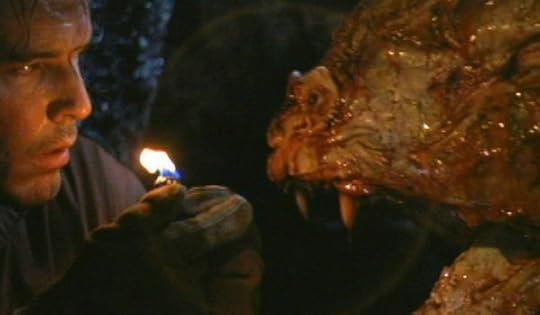
This has got to be the only film on this list that people generally seem to hate (a little) less than The Mangler. But you don’t get to be baptized a Bastard Prince for being a masterpiece—let’s remember that.
Shot on location in Maine, this film, like The Mangler, oozes atmosphere. You can smell the stink of sweat, grease and bloodstained cotton. It’s a septic, almost depraved stench. Imagine finding a decayed rat under your couch—that’s the kind of mood this film evokes. It’s part fascination, part repulsion.
This isn’t to say the film is buoyantly gory (although it has its moments); it just has grit to spare. Similar to The Thing (1982) (only minus the classiness), The Graveyard Shift is a masculine film, which is a unique trait. But on the downside, it’s amateurishly constructed, and as a result, all of that hard-earned atmosphere plateaus out into mediocrity.
But damn, it’s loveable mediocrity! The effects are good; the industrial vibe played to the max; I admire the third-act plot twist, even though it doesn’t really work; and come on— it’s got both Brad Dourif and Robert Englund chewing up the scenery. And when it comes to scenery chewers, these guys have got dentures to spare.
Best scene:
Our devout crew—who’ve braved the dreaded graveyard shift—are in the mill’s basement. And it’s hot down there; sweat is dripping down their faces. And to top it off, their employer is obviously loosing his marbles. And one by one, they’re disappearing. And all of this is set to an eerie soundtrack of squeaking rats, the leathery rustling of giant wings and distant screams.
8. Sometimes They Come Back (1991)
A school teacher returns to his home town. Here, his younger brother was murdered by a group of teenage hooligans. But his brother wasn’t the only victim to die that fateful day; the gang was lost to a freakish train wreck... And now, all of these years later, these bastards have come back to haunt the teacher, one by one, in the guise of students in his classroom.
[image error]
This is what made for TV horror is all about. Watching this, one is reminded of the Dan Curtis / Richard Matheson telefilm collaborations of the 1970s, ala Scream of the Wolf (1974) or The Night Strangler (1973). So if you enjoy streamlined storytelling and frill-less thrills, you’re in luck to begin with.
Sometimes They Come Back works because the short story was so well defined to begin with, easily lending itself to adaptation. There was little fluffing required. The film wisely climbs the ladder of King’s plot rung-by-bloody rung. Good move.
Best scene:
All of the eerie sequences in which the hooligans who killed the teacher’s brother, appear in his classroom. And then they start to sneer and taunt him in front of the other students.
7. Thinner (1996)
An overweight lawyer finds himself cursed by a gypsy after running down the old man’s wife. Now the lawyer is getting thinner; the pounds are dropping off day-by-day. But this dream come true is really a nightmare in disguise, because his weight loss is showing no sign of slowing... He’s getting thinner. And thinner. And thinner.

Thinner was a mixture of fable-like concept and nasty execution. And it’s great to see that these threads have translated from one medium to another (even despite the subdued ending).
Thinner presents an idea—a house of cards—and then allows it to crumble, with all of the pieces falling in mostly the right ways.
The performances are good; there’s a nice King-cameo; and director Tom Holland, who also made Child’s Play (1988 ) and Fright night (1985), tells the story with an economy that has become his trademark. Like The Graveyard Shift, the film was also shot in Maine and the locales shine, offering an authenticity to King’s world that a lot of other adaptations lack. The makeup effects are second-to-none and the entire story is told with a wicked tongue held firmly in cheek.
On the downside, it feels a little padded (it’s only 92 minutes) and Kari Wuhrer is way too beautiful for her role (she’s too ‘90s hot’ in role that requires a rough edge). But these are minor drawbacks. It’s Thinner’s nihilistic streak that makes it tick.
Best scene:
This one’s a given. It’s the very last scene – hell, it’s the last shot. But I wouldn’t dare give it away. Cue evil laugh.
6. Desperation (2006)
In the middle of the Nevada desert, a maniac cop is snatching travellers off the highway and dragging their sorry asses back to the deserted town of Desperation. There they discover the remains of slaughter and a supernatural secret that will challenge their faith and will to survive.
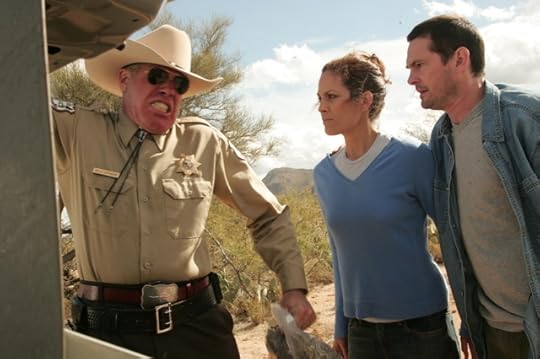
The first of two Mick Garris adaptations to proudly snag a place on this list, Desperation is perhaps the most uneven of the bunch. Why? Because it opens so spectacularly and slowly collapses under the weight of its inferior second half.
Garris’ direction is solid, just as it was in The Stand (1994) and The Shining (1997) (two excellent adaptations) with many scenes beautifully blending pulp with prophetic biblical references. It’s occasionally scary and elegant, yet often incoherent and murky, so the flaws are evenly dealt. And there are a couple of great directorial flourishes, including the over-saturated color palette and the choice of wide-angle camera angles. These lenses propel the viewer closer to intimidating characters on the screen without ever being emotionally distancing. That’s tough to pull off, and Desperation succeeds at it.
The film contains a superb opening set piece, but sadly collapses under the impression of its first half. Left to scramble, inspiration dwindles—despite a number of wonderfully rendered scenes (the flashbacks are very well done). These faults asides, there’s a lot here to be enjoyed, not least of all Ron Perlman’s almost “Kubrickian” performance.
Desperation brims with a joyous energy; the cast is attractive; it’s beautifully shot; and Nicholas Pike’s score is sublime. There are haunting images of possessed animals (the coyotes lining the roads is particularly effective) and more than anything else, there are scenes of dread. Take for example, when young David Carver wanders the empty police station and discovers a dead body that gasps in a death rattle when he brushes against it. Awesome.
Best scene:
As mentioned above, the opening is a stunner, but there’s another scene that gets me every time for its combination of hokeyness and back-to-back thrills. It’s a literal triptych of frights. Steve and Cynthia take shelter in an abandoned Desperation supermarket. They seek distraction from the horror outside by playing with a novelty slot machine – only to have it spontaneously vomit blood. It’s illogical, but dammit, it got me good and it’s an image I never forgot. They delve deeper into the building and find dead bodies piled everywhere, covered in spiders. They make a run for it and escape through the front door, only to be swooped at it by a possessed raven. It’s like a trip to the Devil’s circus, where King is the crooning carny who checked your jacket.
5. Sleepwalkers (1992)
Charles Brady and his mother have a terrible secret: they are sleepwalkers, ancient creatures who can change their appearance at whim. But they are the last of their kind, and they need sustenance. And Charles has set his eyes on Tanya, one of the girls in his class.

Sleepwalkers is also directed by Mick Garris and was the first in a number of collaborations with King, continuing with The Stand, Quicksilver Highway (1997), The Shining, Riding the Bullet (2004), Desperation and Bag of Bones (2011).
To begin, this film is full of deliciously black humor and boasts the best use of an Enya song in cinematic history (yes, better than David Fincher’s The Girl With The Dragon Tattoo (2011)). Also, Garris’ camera has a tendency to weave and gyrate, echoing Argento and evokes a color palette that reminds one of Spielberg’s Amazing Stories (for which Garris was a story editor and recurring writer – he even directed an episode that frighteningly predates the plot of The Green Mile). But it’s the performances that shine brighter than anything else here. Mädchen Amick is stunningly beautiful—as always—displaying the girlish vulnerability that made her so loveable in Twin Peaks. She’s an innocent virgin dancing through a world of adult, and often dangerous, eyes—a theme that’s embodied in a scene where she girlishly dances at work…
This isn’t a scary film, but it’s got childish energy to spare. It evokes the same sense of excitement I get when I watch Stuart Gordon’s Re-Animator (1985). It’s over the top and knows it. Yes, the strokes are broad and the violence is cartoonish, but it’s not meant to be anything but. It also contains a killer set of cameos. Yes, Stephen King, Clive Barker and Tobe Hooper all feature in the same scene—and keep an eye out for familiar faces like John Landis, Joe Dante, Mark Hamill and Garris’ wife Cynthia.
My advice is unplug your brain, tap into your inner child and indulge in some EC Comic-inspired thrills. Oh, and eat your vegetables. Otherwise you’ll get no dessert.
Best scene:
Charles has taken Tanya to Homeland Cemetery under the pretense of doing some headstone rubbings. Only what he’s really after is her soul, which he plans to suck out of her mouth and feed to his mother (via a truly bizarre sexual act). This entire scene sings—it’s well written and directed, and contains some great cinematic choreography. It’s a lynchpin scene, one that rips the viewer from one kind of film and dumps them in another… This latter just happens to be of the campy, blood-splattered kind. Fine by me!
4. Silver Bullet (1985)
The residents of Tarker’s Mill think they’re at the mercy of a psychotic murderer. Only it isn’t a man prowling those streets… Marty, the young handicapped protagonist believes the town is under threat from a werewolf. But who could it be?
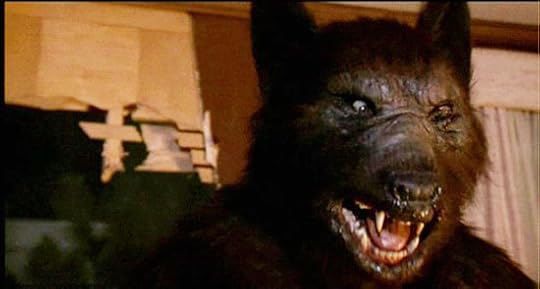
Yet another badass performance from Gary Busey? Check. Wheelchair bound child actor who doesn’t manage to annoy the shit out of you and actually employs a high degree of emotional involvement? Check. Nasty werewolves running around in a rare (for King) whodunit plot? Double check. Other pluses are the sincere, small-town setting and a cast of curious characters that happily interweave through varying sub-plots, all the time spouting some atypical King dialog.
Sure, the creature designs look like Power Rangers in fur coats, but it all works. On top of this, it’s wonderfully filmed in the under-utilized JDC-Scope process, the score is solid and Twin Peaks/The People Under the Stairs’ Everett McGill has a solid part to sink his teeth into.
The supporting cast is peppered with famous faces (keep an eye out for Terry O’Quinn and Lawrence Tierney) and the baby-faced Megan Follows is an endearing narrator.
And what do all of these plusses add up to? Well, the answer to this question is sadly, yet another Dino De Laurentiis financial flop that I just can’t help digging. Big-time. This film is To Kill a Mockingbird with claws—not a bad mix. I’m not going to sit here and tell you it’s a misunderstood masterpiece, because it’s not. It’s just old-fashioned fun, and deserves to be seen.
Best scene:
The revelation of the werewolf’s identity, which comes after a day-long search for a one-eyed suspect… but I won’t say any more for fear of spoiling things for you!
3. The Dark Half (1993)
Thad Beaumont is a best-selling author who has written a number of novels under the pseudonym, “George Stark”. But after a blackmail threat from someone who has discovered his literary secret, Beaumont choses to come clean, and announces Stark’s fictitious nature to the world. Bad idea. People are dying. Mr. Stark ain’t happy.
[image error]
The Dark Half was the second King adaptation directed by George A. Romero directed (though he did write Creepshow 2 (1987) and a segment of Tales From The Darkside: The Movie (1990)). It’s a tense and atmospheric exercise, one that contains some truly startling imagery. In many respects, it’s the final great Romero film (though there is a lot to like in his later work). Certain scenes embody an eerie, dreamlike quality with their depictions of rotting meat and shattering vases.
The film is given buoyance by fantastic performances, especially those of Timothy Hutton, Amy Madigan and Michael Rooker as Alan Pangborne (a role which would later be portrayed by Ed Harris in Needful Things (1993)). The theme of the doppelgänger and the shocks are both expertly handled. Watching this, you know you’re in the hands of a pro. You need only view that sequence of Technicolor bloodshed when the literary editor is stalked outside his apartment. And Hellraiser’s Christopher Young sets all of this to an oppressive, suspense-fueled score.
The primary flaw of this film is the pacing in the final act; it drags and grows repetitious when it should do the opposite. It also ends on an abrupt and strangely unsatisfyingly note, as darkest night closes with the potential for future dawns. But this sense of ‘hope’ isn’t enough to ruin an otherwise consummately made experience.
Best scene:
Pretty much any scene in which you hear Elvis Presley’s “Are You Lonesome Tonight?” Trust me—goose bumps are guaranteed. You’ll never think of that song the same way ever again. And watch out for those sparrows, too.
2. Christine (1983)
Arnie Cunningham has fallen in love and that love is changing him. Everyone used to think he was such a geek, but now he’s becoming cooler and cooler. He’s also developing a bit of an attitude problem. He’s getting cocky. Overconfident. Possessive. But love can do that to some folks, right? Oh, and did we mention the love interest is “Christine”, a bright red 1958 Plymouth Fury?

Christine is a good example of editorial streamlining saved by great direction. And if you’re going to water down a balls-to-the-wall retro horror novel about a pissed-off Plymouth with the ghost of a decaying dead man in the back seat … well, you better get John Carpenter behind the lens.
Christine is one of those films, like De Palma’s adaptation of Carrie, which tonally captures the melancholy of adolescence, making Carrie and Christine kindred stories of isolation, of the pain and rejection we endure in our younger years. But without these emotions, we cannot grow.
This is an insidious film that’s full of great moments and performances. It showcases yet another fantastic electronic score from the director, superb cinematography (that manages to be stylish without ever being emotionally exclusive, as so many over-stylized horror films can be) and simple, yet effective, special effects. It’s never terrifying in the way it should, or deserves, to be. But don’t worry; Christine has enough John Carpenter set pieces to keep demanding audiences well and truly satisfied.
Best scene:
I’ve always felt that the football scene in which Dennis injures himself in front of his best friend, his new girl and the car was an emotional showstopper. It’s also draws together the film’s twain thematic themes: horror and the horror of change.
1. The Night Flier (1997)
Richard Dees is a tabloid investigative reporter on the heels of a serial killer who travels by private plane and stalks victims in rural airports. Dees has got a hot, young protégé with him, and together they discover that ‘The Night Flier’ may not be human.
[image error]
It goes without saying that The Night Flier is underrated. Watching it, one would think Mark Pavia would go on to have an expansive career. Sadly, this is his only feature credit to date. And that’s a shame. Pavia’s directorial touch is assured and refreshingly confident.
And this confidence infiltrates the eerie soundscape, the creeping camera work and the controlled pacing. On top of this, Miguel Ferrer is fantastic—as always—in a role that isn’t much of a stretch for him, although he imbues it with a pathos that transcends mere asshole behavior. Thankfully, he comes out genuine on the other side, and that’s a tough balance, considering the places King took the character—and Pavia only takes him further.
The film is a welcome alternative to the anemic vampire films of late, with one foot grounded in the modern world and the other in traditional Bela Lugosi lore. And unlike a lot of horror films (some of which are on this list), The Night Flier earns its deliriously gory finale. It’s almost cathartic in its fucked-up-ness.
A film about ‘opposites converging’ (characters, plotlines and genres), this is an adaptation that only now seems to be receiving the accolades it deserves. Word on the street is that Pavia is helming a King anthology that will combine Mile 81, The Reapers Image, N and The Monkey. And I think he’s got it in him to do these stories justice. But it’s The Monkey that seems the most controversial inclusion. Legend has it that this was Frank Darabont’s long-gestating property, and for those who’ve waited years for that version, this news may be met with disappointment. But I’m not worried. If this anthology develops wings, which I sure hope it does, it’s bound to fly with Pavia in the cockpit.
Best scene:
From beginning to bloody end.
-- Aaron Dries is the author of the award-winning novel, House of Sighs (2012). Available now through Samhain Horror.
May 17, 2012
House of Sighs excerpt
Her passion was dancing. Spinning herself dizzy in search of rhythm, pirouetting until her toes hurt. Her father had bought her a pair of ballet shoes—a perfect fit, and with pink ribbon laces that wound all the way up to her ankles. She scuffed and broke the soles with a serrated kitchen knife she snatched from the kitchen drawer. Suzie adored those shoes with a pure love that only children can seem to feel for inanimate objects. She was wearing them when she was torn apart.
It was November 12th, 1995.
To Suzie, Sunday morning was the final stop between freedom and school. She both loved and hated Sundays. Suzie despised school and feared her raven-faced, balding teacher, who would sometimes get so mad he threw things. She imagined he spent his Sundays alone, watching the clock, eager for Monday to arrive so he could overturn another desk. He had done this to her best friend. Books and pencils had crashed to the floor, an eraser bounced up and clipped one boy’s ear. At recess Suzie sat beside her humiliated friend and wrapped an arm around his shoulder—a brave move considering his sex—because as any ten-year-old girl knows: where there are boys, there’s a whole lot of germs. “It’s okay,” she whispered in his ear. “I saw on the T.V. that teachers can’t hurt kids and we can sue him if we want. He’s such a…dirty shit.”
They looked at each other, shocked. Dirty shit.
“Suzie Marten, you can’t say that! If they hear you, they’ll send a letter home to your mom and she’ll wash your mouth out with soap, or something. I saw that one on the T.V. too.”
“Na-uh she won’t. My mom’s too tired to do that. Always in bed. And besides, she says words like that! She works the dogwatch at the hospital—whatever that means. She gets home from work when everyone else is getting up. I don’t know what a dog has to do with it. I once saw this boring black-and-white movie about a vampire who only ever came out at night. He could turn into a bat and flew around eating people—or something—and during the day he slept in a box. Did’ja ever see that one?”
Suzie once teased her mother’s mouth open with a spoon while she slept, to see if she had fangs. Donna Marten bolted awake, grabbed her daughter by the wrist and pulled her under the sheets. They laughed. That night they had Fruit Loops for dinner.
On the morning of the ninth, Donna fell into bed after a ten-hour shift. Her knees ached, the smell of disinfectant and cigarettes sweating out of her pores. She was too tired to shower. Suzie pulled the blankets up to her mother’s chin.
“Mo-om,” Suzie said, her voice drawn out and meek.
“What is it, honey? I’m dead on my feet.”
“Well…”
“Come on, out with it. I’m two ticks from dreaming.”
“Well, I was just wondering. How come on television moms don’t get old? How come Julia Roberts never gets wrinkles, or anything, but you’re starting to look like an old lady? Like a bit of an old rag.” Mother stared into her daughter’s innocent eyes… Innocent, Donna had to remind herself. Innocent.
Forgive her, for she knows not what she says—it was an expression her own mother had been fond of using, and often. Donna never really understood its meaning—its weight—until that moment. There in her bedroom with her daughter. For the last time.
“Count yourself lucky I love you, Suzie,” she said, wishing her little girl were old enough to start lying like everyone else. But despite this, they kissed goodnight and all was forgiven. She watched her daughter pull the door shut, taking with her the smell of Strawberry Shortcake and pre-teen sweat.
Suzie passed a cabinet full of her gymnastics trophies in the hallway, the glass planes shaking as she bounced along. Her reflection twittered from one family photo to another. Leaping into the kitchen, she slid to the refrigerator in her socks. It was covered in drawings and magnets, school reports and shopping receipts. Alone at last.
Her father was away on another business trip. Where he went she rarely knew, but she was always glad to see him go, as he never came back empty-handed. Once he brought a packet of windup crayons—the good kind, unlike those some of her friends owned, which would have to be thrown away if you twisted too far—and another time, the ballet shoes.
She watched Sailor Moon over cereal. Afterwards, she pulled her hair into a ponytail and brushed her teeth, the bristles as frayed as the wheat stalks on her uncle's farm after a storm. Suzie didn't see much of her extended family any more, least of all her uncle in Morpeth, not with her father always traveling and her mother sleeping day after day.
Donna Marten found dried toothpaste splashes on the bathroom mirror a week later. She licked them off and fell to the floor, her mouth tasting of mint and the briny tang of tears.
Suzie put on her headphones even though the padding itched her ears, and slipped into a pink leotard and tutu. She pressed Play on her Walkman and music filled her ears. She slammed the front door as she went into the yard.
In the house a mechanic hum escaped the freezer; the grandfather clock ticked away. Gentle draughts tickled the wind chimes near the window until they laughed. And through it all Donna Marten snored.
Suzie danced to Mister Boombastic (“say me fan-tas-tic!”) on the front lawn. In her opinion she lived on the most boring street in all of James Bridge, maybe even all of Australia: a rarely traveled stretch of road on the outskirts of town. Suzie had no neighbors, but should a car come along she liked the idea of being seen. This was why she danced, and why she danced so well. She didn’t twirl and then fall for herself, but for everything. There was simply nothing else to do.
Autumn was hot that year, the house surrounded by matchstick grass. The valley hissed when the wind blew through the dead trees, a desperate, lonely sound.
Suzie spun and curtsied, laughing to herself. I could do this all day, she thought. And I will! Go on, stop me. Dirty shit, dirty shit!
She loved watching her shadow on the lawn, the way it was a part of her. But when she leapt into the air they were separated. If only I could fly forever, she thought and then withdrew. But I would miss my shadow. That would be sad, like losing a friend.
Four hours after falling asleep, panic reached into the dark and ripped Donna from her bed. Her stomach knotted, brow flecked with sweat. It had not been the sounds of screeching tires, or the muted gunshot that awoke her—fatigue had seen to that. It was that her mind had fled her body and her flesh had no choice but to follow.
She threw open the door and ran from room to room. Nothing.
“Suzie!” she yelled. Her voice was feral, unrecognizable as her own. Something inside fueled her dread. The house was empty.
Donna stumbled outside, her eyes squinting against the sunlight. Pain thudded in her head and shot down her spine. Suzie was not in the backyard. As she rounded the house and neared the front gate, she felt heat waves coming off the brick wall to her right. She fumbled with the latch. Next to her were the trashcans, their stench reaching out to grab her, to make her feel ill. The latch opened and the gate swung wide—a sharp cry of metal grinding metal.
Donna ran onto the front lawn and stopped.
The Walkman was shattered near the gutter, ribbons of gray tape fluttering in the wind. Suzie Marten was strewn in pieces across the road.
Crows fluttered over intestines, disturbing the stillness. One hopped onto Suzie’s head, spread its bloodied wings and squawked. It lowered its beak and bit the child’s tongue, which had been cooking against the tar.
Her daughter’s ballet shoe lay in front of her, distorted by heat waves and the foot still inside. Donna screamed.
Her breath came short as her nostrils filled with the stink; a putrid mix of chemicals and sugarcane, shit and salt. She would never forget it.
Darkness flittered over her vision and Donna ran to her child, lashing out at the birds. They twirled and cawed, sprinkling blood drops over her face. “Get away from my baby!” she screamed, arms thrashing. But the beaks returned to meat, to gorge.
Those delicate, soft stabbing sounds.
A crow settled on Donna’s shoulder, feathers brushed against her cheek. Her world emptied. She clambered over gravel. This isn’t happening, she thought. It can’t be. I’m dreaming—that’s it! I’m still sleeping, my baby isn’t torn to pieces. Donna started to laugh, short, deep bleats. Parents were not equipped to see these sights; to smell such insane, bitter scents.
She fought the birds again, kicked out, punching. Donna didn’t comprehend what she was doing until she held one of the animals in her hand. Its scream mingled with her own, formed a single high-pitched mewl that echoed across the fields. She let it drop, its wings broken.
Donna fell to her knees and attempted to scoop up as much of her daughter as she could manage. Her arms swept wide in manic, possessive hugs, pulling the larger chunks closer and closer to her chest. Tears slipped down her face. She gave in and settled on the largest intact fragment: Suzie’s head, neck, collarbone and left arm, which seemed to be only holding on by a thinly stretched tendon. But the birds were hungry and selfish and would not let their bounty escape without a fight. They swooped. Their black-on-black eyes were empty and so cold.
The chunk of Suzie was only a quarter of the corpse, but Donna thought it was heavier than her daughter had ever been intact. She turned her back to the crows, deflecting swoops and scratches.
And then without warning, the weight in her arms lessened and Donna felt something slap against her shins. Something warm and something so very wet.
Donna was a nurse and assisted doctors in surgery. What she saw sitting on her shins was unlike anything she had ever seen at work. It was small and childlike. A healthy heart that still had many years of beating left to do.
Donna collapsed amid a flurry of dark wings, dark shadows.
... And that's the opening chapter to 'House of Sighs.' Interested in reading more? Grab a copy today or visit
http://www.aarondries.com
HOUSE OF SIGHS - 4.5 stars out of 5
"Aaron Dries’ debut pulls out all the stops in this fast-paced, gruesome story that delves into the human psyche and explores what pushes a person to commit horrific acts of violence. The villains Dries creates are incredibly realistic and absolutely terrifying. Filled with plenty of gore, enough to cause this reviewer to pause mid-page and look away, this story is not for those with a weak stomach, but will please any horror fan looking for an entirely unique, twisted tale."
“House of Sighs grabs you from page one and displays moments of real brilliance. It's fast, scary and disturbing.”
--Nate Kenyon, author of Bloodstone and Sparrow Rock
March 26, 2012
Pay No Attention to That Man Behind The Curtain - On Forgetting Robert Bloch
We’re not emerging into the digital age anymore — it’s very much here. With that in mind, I think it’s important to remember the value of good-old-fashioned books, and more importantly, the paper bound between their covers. The words on those pages only last a reading for some; for others, the words last for as long as the novel remains in print … But then there’s that other shelf life. The kind of shelf life that extends to the almost cult-like raiding of book market bins (usually the ones with $1 each or 3 for $5 scrawled across the cardboard in permanent ink) and eBay raids (though dammit, they take the fun out of searching). Shelf life as inspiration, resulting in borderline obsession.
But paper breaks down. It fades. The words slip into oblivion. Dust to dust.
And what then of the author? You know, the bespectacled, chain-smoking guy banging away at the typewriter? What of guys like Robert Bloch? The answer to this may be a question for many.
That question being: Who?
Even the devil gets his due … so why not Robert Bloch, the great-grandfather of the horror slasher?
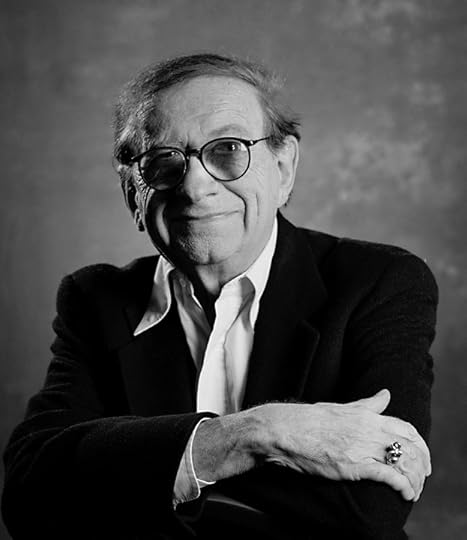
1959 saw the release of his novel Psycho, a nasty little story with a nasty little reputation that caught the eye of a not-so-little man with a not-so-little reputation … It was a match made in Heaven turned Hell. Welcome to the auspicious world of Bloch and Alfred Hitchcock, a place where the knives are always sharp, where motels are open even if the light isn’t on … a place where showers are best taken cold—if taken at all.
Bloch’s influence on modern horror stretches back many years, succeeding prior to Psycho and lasting long after its publication. You need only flip through the pages of any respectable horror anthology encompassing the past hundred years of genre fiction to chip away at Bloch's legacy. His short stories dealt with crummy deadbeats and scheming husbands planning to do away with their wives; dealings with the devil in bayous and bars; they dealt with pins and knives and fate. His stories were indebted to the business of fear, and in true pulp-style, he somehow made a living out of it. Just.
It started with the fondly remembered magazine Weird Tales, to which Bloch contributed in a voice not dissimilar to his mentor and correspondent H.P Lovecraft. But what developed was an author with a voice of his own, a voice that knew when to rise to scream-high pitches and when to drop to the depths of disparity. Bloch knew what he was doing, how to do it and when. This was a guy who could make you sweat. And laugh.
He won the Hugo Award in 1959 for his classic short story, That Hellbound Train (which was recently adapted into an excellent comic book by Joe R. Landsdale and artist Dave Wachter) in which one of those crummy Joe-nobodys referred to earlier, makes a pact with the devil himself. The story still works. You can still smell the steam of that haunted locomotive today.
Awards aside, the winnings continued. Take for instance stories like The Pin (1953) in which an overworked and depressed grim reaper spends his days and nights stabbing at an endless list of names with the titular weapon (and a what a weapon it is). Or A Toy For Juliette (1967), which puts the iconic Jack the Ripper (with whom Bloch had a long, literary relationship) in outer space. Or even better yet, The Animal Fair (1971), a story that reveals the fate and history of a maligned, deformed circus ape (trust me—it’s pretty fucked up … and sublime).
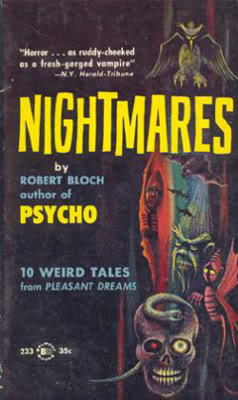
It’s fair to say that even without his novels, Bloch’s deft touch left claw marks down the back of genre fiction.
But let’s not forget those novels.
As much as I adore his short-stories, it was his full length books that I really responded to. They were littered with auspicious puns (a definite trademark; Bloch was the author who taught me the brittle relationship between horror and humour), twisted noir-ish plots, surprise endings and (un)appealing characters who always did the most (un)appealing of deeds. And they were longer—awesome.
His career as a novelist began with The Scarf (1947), which kicks-off with the haunting lines:
“Fetish? You name it. All I know is that I had to have it with me.”
Suffice to say, Bloch had me at hello. And I’m not alone on that one.
The bones of his cadaver-career grew, snapped and malformed to encompass more short stories and other twisted novels. The Scarf was followed by Spiderweb (1954) and the wickedly plotted The Kidnapper (1954), about the unravelling of the seemingly perfect crime. The same year saw the publication of The Will To Kill, which had me terrified of jesters. I ask you: have you ever wondered what’s inside their canes?
Why knives, of course. Knives …
One year after getting Shooting Star (1958 ) onto shelves, Bloch released the book that would inevitably become his middle name, Psycho.
Cue violin screeching.

Yeah, we know all about the film. It’s a masterpiece, there’s no disputing it. Everyone has seen it at least once, and everyone knows that Hitchcock directed it from a screenplay by Josef Stefano (who also went on to write the under-appreciated Psycho IV: The Beginning (1990) directed by genre veteran in the making, Mick–Masters of Horror–Garris). Yet so many people don’t know that Psycho was based on a novel (of the same name, no less) by Robert Bloch? I’ve taken film lectures that don’t acknowledge it because the speakers weren’t even aware. If you listen to the audio commentary between Gus Van Sant, Vince Vaugn and Anne Hench on the Psycho (1998 ) remake DVD, you will hear Van Sant mention the book in passing and Hench proclaiming that she had no idea it wasn't an original screenplay.
It’s saddening. Hitchcock himself loudly proclaimed his admiration for the book, (to paraphrase), “it all came from the novel” and, “Stefano was hired to write dialogue, not plot.”
Bloch’s name is even gone from the remake's opening credits (in yet another distracting departure from Van Sant’s mission to reproduce the original film frame-by-frame). It also gets an anaemic rendering in Robert V. Galluzzo’s otherwise great 2010 documentary, The Psycho Legacy (although Bloch’s writing does get it’s due in a twelve minute segment on the DVD’s special-features disk).
People like William Peter Blatty and Stephen King (who devoted much of his inspiration to Bloch and other writers of his generation, including Richard Matheson) acknowledge the importance and significance of Bloch’s erudite plotting and craft—so why is it continuing to go on un-credited?
Let’s dig deeper.
Consider one of Psycho ( the film’s) greatest achievements: its mechanics. It was Bloch who cheated expectation by establishing a female character who, for all intensive purposes, would be the heroine of the story, only to surprisingly kill early on in the book. The result: utter disorientation of the reader. Added to this, is the Second Act flip of alliance from murdered Mary to secondary characters Sam and Lila, and topped off by the shrill Final Act twist heard around the world:
Norma Bates is Norman Bates.
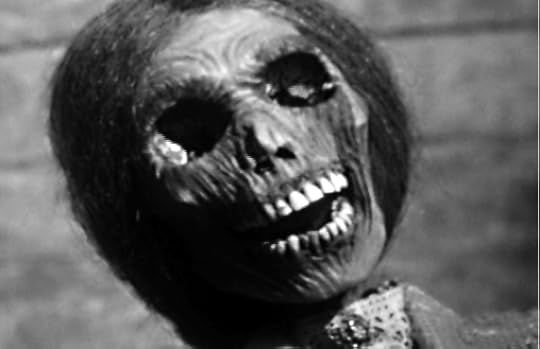
The book is identical to the film almost note-for-note, with two primary deviations: dialogue (Bloch had immaculate, clean and clever prose, but this description does not necessarily extend to his dialogue, which is fashionable, if no-frills) and a First Act deletion.
That deletion, to Stefano’s credit, made complete sense. The novel depicts scenes between Norman and his mother as though she is still alive. Instead of going down this path, Stefano and Hitchcock decided to have the mother appear off-screen until the very end (with the exception of the cleverly shot murder sequences). As a result of this change there was a huge gap in the plot, and now our quarter-length surprise murder in the shower is now —by default— the opening scene! To accommodate this, Stefano expanded Marion’s (Mary in the book) back-story and the theft details. But if you listen to Stefano speak in interviews he credits himself with this plot device. And that’s a shame. In no way am I intending to belittle Stefano’s talent, but comments like these cheapen his reputation as a wonderful writer of dialogue. It disrespects Bloch (and don’t get me started on the delirious snobbery of François Truffaut in his awkward and infamous Hitchcock interview).
But the disrespect would not end there. We’ll get to that.
Psycho the novel is almost impossible to read without imagining Anthony Perkins in the Bates role, much like reading King’s The Shining without picturing Jack Nicholson (although credit where it’s due, Steven Webber did a great job as Jack Torrance in the 1998 (also) Mick Garris directed The Shining mini-series). And here comes the trouble: Bloch’s Bates is a very different man than the one portrayed in the film, both physically and mentally. He’s overweight, biting and bitter, with the veneer of cordiality. Perkins, on the other hand, is 'the boy-next-door,' handsome and trustworthy—it’s a wonderful deceit. And I’m not the first to say it: Perkins turned in a fantastic performance (one of the best in film history).
So, should you be inspired to pick up Bloch’s book after trawling through this speil, it’s imperative that you literally re-cast it in your mind. Trust me on this, it reads so much easier if you’re not making the constant comparisons to the film (and characterizations). Although it’s difficult to do, it’s best to erase Hitchcock from your mind completely. Take a different approach—think gritty and real (Bloch’s inspiration for the book was the Ed Gein case, which also served as the basis for Tobe Hooper’s classic The Texas Chainsaw Massacre (1974)), simply because that’s how the book is written. It has a grim, nasty feel to it. Mischievous. The book has secrets and it’s deceiving you. You get the impression that it’s cleverer than you are. It holds its cards close to its chest, teasing you with glimpses—but never quite enough (for example: in his wonderful “Unauthorized Autobiography”, Bloch explains that Norman Bates—the name—is the novel’s biggest clue. Norman can be broken into two parts Nor and Man, as in nor man or woman, and Bates echoes the words baits as in “to bait”. Bloch did the same thing with the title for his 1982 sequel Psycho 2, which again provides the ultimate clue in the books most-unexpected revelation).
But back to re-casting … Think Phillip Seymour Hoffman as Norman Bates.
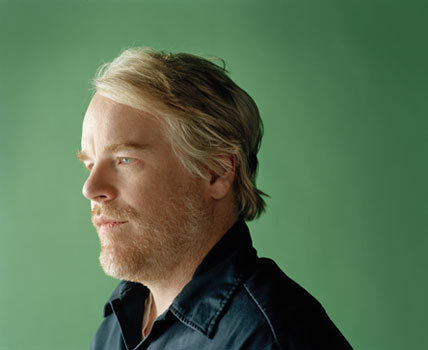
I know you’re probably going … really? But it works as Bloch wrote him. Another thing to remember is that in the book, Norman is not two personalities as he is depicted in the film, but three. He is Norman, his mother and Norman as a child.
The other necessary deviation concerns the infamous shower scene.
Readers expecting a blow-by-blow recreation of Hitchcock’s spellbinding sequence will be disappointed. Hitchcock’s murder runs forty-five seconds, required seven days of shots and seventy camera set-ups. Bloch did it in one sentence.
And a pun, no less.
“Mary started to scream, and then the curtains parted further and a hand appeared, holding a butcher’s knife. It was the knife that, a moment later, cut off her scream.
And her head.”
Although the two experiences are vastly different, the ultimate effect remains the same: the utter, excruciating shock. Both showers rain facts upon Mary/Marion. You are going to die. It’s going to be a knife that ends you. You are going to bleed … Goodbye.
Now that you’ve put the required wedges between the book in your hand and the film in your memory (Norman, the tone and the shower), sit back, turn off the television and hope for a rainy night—with nary a trusty umbrella to be seen—and read.
Once you have finished reading, dash out and find copies of Bloch’s Psycho 2 (1982) and Psycho House (1991), completing the trilogy. Most people who read the first sequel expect something akin to the content of the (admittedly well-crafted) film Psycho II (directed by the ‘Aussie Hitchcock’ himself, Richard Franklin, and written by Tom—Child’s Play—Holland in 1982). Again, you will be disappointed.
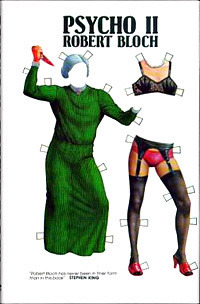
Psycho 2 (the book) has no resemblance to Psycho II (the film) because it’s not an adaptation at all. Bloch had nothing do with the movie and reputably, did not ever see it. The rights to the novel were snapped up by Universal with every intention of filming it until they sat down and actually read the content.
“Uh-oh,” said Universal. Followed by a swift, “oh well. Who needs this Bloch guy anyway!”
Some people have said that the novel is un-filmable—and I strongly disagree—but it would take a considerable talent to bring it to the screen. I think Franklin could have done it. But the reason the book was never realized was because the film executives at Universal objected to Bloch’s unflattering representation of the film industry.
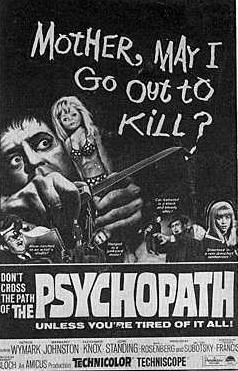
Bloch himself was an industry insider. He was a Hollywood writer when he wasn’t a pulp novelist, penning screenplays for William Castle (Strait-jacket in 1962 and The Night Walker in 1964), Alfred Hitchcock himself on his television programs, Freddie Francis (The Skull in 1965 and The Psychopath in 1966), among others. Psycho 2 was not his first exploration into the what would become the ‘Lynchian underbelly’ of the film industry. His novel The Star Stalker takes that billing, being the first in a sadly un-finished trilogy about the silent-film era (a character from that book actually has a minor role in Psycho 2).
The plot of Psycho 2 has Norman escaping from his mental institution in the guise of one of the two nuns he has just murdered (one of which—it's later implied—he raped), after being seemingly cured by his psychiatrist, Doctor Claiborne. He grabs their van and makes a run for it, kills a hitchhiker along the way, and high-tails it for Hollywood to put a stop to the production of “Crazy Lady”, a filmic adaptation of the now infamous “Bates case” (maybe Kevin Williamson read this book before sitting down to write 1998’s Scream 2). But not before stopping off at Fairvale one last time to visit Sam Loomis and his now-wife Lila … Doctor Claiborne is hot on Norman’s tail, especially now that a sizeable body count is piling up in Tinsel-town.
It is in this setting that the true intention of the novel becomes apparent: Psycho 2 is an often-biting mediation on slasher films and the Hollywood machine in general. Bloch depicts the industry as being full of drug addicts, misogynists and perverts, interspersed with innocent actresses and bat-shit crazy directors. It’s all great, surreal stuff.
In order to discuss further, I have to reveal the books' secrets. You have been warned. If I’ve piqued your interest enough for you to seek it out, then turn back now. Winged monkeys and apple-tossing trees lurk beyond, dare you tread further … Bevareee!!! (note the three exclamation marks—that’s how serious I am.)
The great surprise of Psycho 2 is that there is a surprise at all. You breeze through the pages thinking you are being treated to a psychological slasher with some nasty satirical undertones, brimming with red-herrings and enough muggufins to keep even Hitchcock himself set for life. But it turns out you are reading a who-done-it. Or more aptly, a who-didn’t-do it. And folks, it wasn’t all Norman, or young Norman, or Mother-Norman—which explains the pun in the title. Remember how Norman killed that Nun after escaping from the institution, grabbed their van and picked up that hitchhiker? Well, it turns out that it was not the hitchhiker’s blackened remains in the burned out van on the side of the road … it was Norman’s. The hitchhiker fought poor Norman off and got away. Then, in a delirious rift on some very Hitchcockian themes, the murders from that moment on were committed by Norman’s psychiatrist, Doctor Claiborne. His motive: a well-executed example of transferral of guilt/personality. It turns out Claiborne took too many return dips to the Bates well, and somewhere along the line adopted the personality he spent so many years trying to understand and subsequently, destroy.
I assure you, it’s an ending no-one saw coming. Especially Universal.
So the internationally praised novel (Peter Straub and Stephen King were chief advocates) was deemed irrelevant and subsequently scrapped. A new screenwriter hired to create a film with no relation to the source material at all. And so began the fork in the road, which would send two Norman’s down two very different paths.
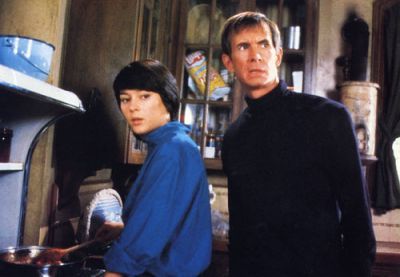
Psycho II the film, as I mentioned before, is a well-crafted experience. Franklin directs with incredible economy and the cast is exceptional (Meg Tilly is especially good). And truth be told, I’d always thought Holland’s script to be among one of the best plotted thrillers I’ve ever had the pleasure of seeing. I still think that … but I never knew how derivative it was until I saw that old 1964 William Castle film Strait-jacket.
Written by Robert Bloch.
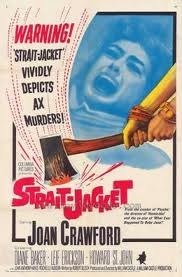
Here is the synopsis for that film: Lucy (Joan Crawford) has spent the last twenty years in a mental asylum for the criminally insane because she got a wee bit axe-happy on her cheating husband—with her young daughter, Carol (Diane Baker) in the room no less. But time has passed and Lucy is now sane enough to be released back into society, under the care of her daughter and her new fiancé. They greet her with open arms and treat Lucy with respect—almost as if nothing had ever happened. But …
And you knew that but was coming, right?
BUT… Lucy is beginning to see and hear things that are triggering unhappy memories and feelings in her. They type of feelings that make even the most certified of sane people feel a little ... unhinged. Enter her former psychiatrist (Mitchell Cox) who as soon as arrived is as soon dead. Decapitated. Kaput. And who is the main suspect? Lucy, of course.
Cue a flashing SPOILER declaration, flickering in the night like a VACANCY sign on an old highway motel.
It wasn’t Lucy committing these murders. It was her daughter. The plan had been to create emotional triggers to set her mother “off” to the extent that she would attract the suspicions of those around her. Carol then went on to kill, dressed up as her mother, in an act of revenge for the murder of her long-dead father.

That’s the nuts-and-bolts of Strait-jacket and I’m sure this stripped-down recital sounds familiar enough to the seasoned Psycho fan. I'm not saying Holland is guilty of plagiarism, but (there’s that damn BUT again) the echo still rings. Strip away the extra characters and the superfluous last-minute Mrs. Spool revelation in Psycho II and you’ve got Strait-jacket.
It’s not saddening, but it’s worth a sigh. Hollywood didn’t have the balls to show its underbelly in ’82 (or perhaps they simply wanted a franchise) and instead, made an uncredited remake of a film penned by the same hand they had rejected.
Let’s move on.
Psycho House was originally to be titled Psycho 13. My interpretation of this: where is the thirteenth room of The Bates Motel? That question serves as the helix upon which the entire novel operates, and I’ve come too far to not give you my two cents about it (flick on the SPOLER sign again). Bloch holds this metaphorical revelation to the very end, in fact, to the very last sentence.
“Let me make a suggestion,” Steiner said. “When you’re finished, maybe you can write another book, about life in the asylum.”
“Here?”
“No.” Steiner gestured towards the window. “Out there.”
Psycho House concludes Bloch’s almost melancholy reflection on the monster he created and how the public clung to Bates cum pop-icon for so many years. The book dealt with the notions of serial killers as celebrities and the general public’s hunger for bloodshed. Psycho House isn’t as good a read as its two predecessors; it serves rather as a fitting epilogue to the series, written by a man more concerned with impact than shock.
The plot: Amy Haines is in Fairvale researching a book she plans to write about Norman Bates and his ongoing popularity. Meanwhile, a local entrepreneur has recreated the infamous Bates Motel and adjoining house as a soon-to-be-opened tourist trap (even down to an animatronic Norman, “Mother” recreation and the murdered Mary in the shower). However, the weekend before the opening a young girl is murdered in the house, giving Amy a perfect angle for her book. All of a sudden, her subject is “hot” again, and her snooping may just pay off—financially, as well as artistically. She enlists the help of a demonologist, Fairvale’s local newspaper publisher and Dr. Steiner (who is in charge of the still-unstable Doctor Claiborne). Their combined sleuthing is unfavourably looked upon by Fairvale locals, who in turn, look upon the Bates case as a blemish upon their reputation. But people are being murdered; the “Mother” dummy is missing; who is the killer?
It’s an old fashioned who-done-it where the plot almost takes the back seat to Bloch’s pitch-perfect prose and wicked sense of humour. On the downside it lacks the great revelations the series had become renowned for (it’s a case of the “twist” discourse that plagues the horror/thriller genre unlike any other, in which the expectation of a twist is determined by the effectiveness of the twist which preceded it— think Shyamalan films post The Sixth Sense etc), and honestly, it isn’t as genre-pushing as either Psycho or Psycho 2. But it does, well and truly, close the door on the Bates mythology. The book’s perspective is no longer mediation, rather a judgment we all as horror fans and members of news watching society, are guilty of.
Between these three novels there was The Dead Beat (1960), Firebug (1961—another important Bloch novel which forms an unofficial triptych of narration that began with The Scarf and continued with Psycho) and The Couch (1962—an adaptation of Bloch’s own screenplay, but a finely structured novel on its own). The Todd Dossier (1969) was a second novelization, this time for a film that was never filmed, which left behind a novel that Bloch legally couldn’t have published under his own name. It was released under the name Collier A. Young, a character in the book. Bloch did one further adaptation: The Twilight Zone (1983). The Twilight Zone poses as a great example of Bloch’s commitment to his trade. He was given the screenplay six weeks before his manuscript needed to be submitted to the publisher, only two of the sequences were screened for him, and he had to change the ending of the first segment after a fatal accident that occurred during filming. Add to this there, is no “wrap-around”, with the stories instead presented as un-related throwaways, based on an existing screenplays, from prior teleplays, from originally published short stories. If it’s exhausting to read just imagine what it was like to write!
1962 saw the publication of The Terror, which was a fine, economical murder-mystery about Kali Thugee cults in (then) modern day society. It’s almost impossible to find, but if you do find a copy snap it up quick—you’re guaranteed a delightful mystery.
It’s important to remember that as well as being a staple in the psychological horror genre, Bloch was just as involved and cherished within the science-fiction community. Ladies Day/This Crowded Earth (1968 ) and Sneak Preview (1971 ), carry on this tradition. These three novellas are indebted to Aldous Huxley and George Orwell, but are full of Bloch’s wit and bitter violence, giving these stories a tartness its influences lack.
The seventies rolled by and Bloch released It’s All in Your Mind (1971), Night World (1972—which came very close to being adapted for film a number of times with Bloch as screenwriter) and American Gothic (1972).
American Gothic is another horror novel about a psychopathic mass-murderer with roots in reality. Set in the late 18th Century Chicago, pharmacist and real-estate industrialist, G. Gordon Greg, invites people to come and stay in his urban mansion during the Chicago State Fair. But those who enter never come out again. It’s a fantastic, sick read, based on the story of H.H. Holmes, “America’s first serial killer”.
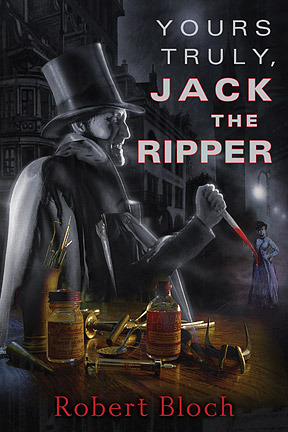
The novel shares similar themes and atmosphere to Night of the Ripper (1984), a moody, suspenseful retelling of the Ripper legend, based in fact, full of pre- From Hell (Alan Moore, 1991) appearances from The Elephant Man, Oscar Wilde and others. Night of the Ripper concludes a multi-decade fascination Bloch had with the elusive murderer, that began in 1943 with Your’s truly, Jack the Ripper. This classic tale combined fact with supernatural fiction, with the Ripper cast as an eternal being who must make human sacrifices to stay alive. It was adapted for radio (Stay Tuned For Terror) and television (for the amazing Boris Karloff hosted anthology series, Thriller (1960-1962), which also featured many Bloch adaptations and teleplays). The Ripper fixation continued with the aforementioned A Toy For Juliette, A Most Unusual Murder (yet another reason to fear old antique stores) and an episode of the original Star Trek series, titled A Wolf In The Fold.
In the suspense/thriller vein Bloch revealed the chaos in the seemingly serene with There Is a Serpent in Eden (1979), which is a delightful who’ll-do-it set in an aged-care home. It’s a novel I’ve always loved, with an ending that’s on the predictable side, but lovingly predictable. Its resolution is delightfully pulpish. 1991 saw the publication of Bloch’s last novel, The Jekyll Legacy (co-authored by Andre Norton), a disappointing sequel to R.L Stevenson’s classic, that despite its charms, fails to thrill due to Bloch and Norton’s jarring clash of styles.
On the supernatural front, Bloch wrote two final novels: Strange Eons (1978 ) and Lori (1989). Eons is an unexpected treat, especially for H.P Lovecraft fans. It is a meta-fictional divulgence into the Cthulhu Mythos that is as fast-paced as it is structurally surprising. Lori to this day cries for a cinematic rendering, a sentiment shared by The Psyhco Legacy director Robert V. Galluzzo. With its mixture of dreamlike imagery, serpentine storyline and subtle sexuality, it seems the perfect match for a director like Mick Garris, who handles that mix well.
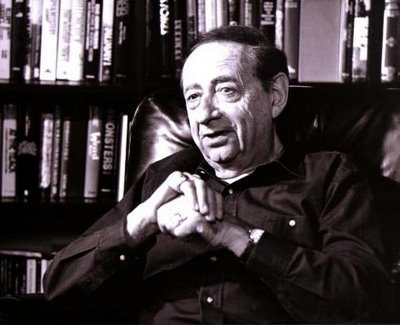
On 23 September 1994, seventy-seven year old Robert Bloch died from a battle with cancer he didn’t even acknowledge in his autobiography, which was only written one year earlier. Reading that final work is a bittersweet experience. It's full of his best punch lines and observations, but between the sentences seethes the unspoken knowledge that he does not have long to live. And still it's wonderfully entertaining. Bloch once said of Fritz Leiber: “When he writes of graves, they always yawn—but his readers never do.” It is an astute observation, and one that he could have easily directed at himself.
The humor and the fear survive in pages that are quickly breaking down, on shelves that are emptying out. Books are dying, but the words won’t disappear so quietly. Not if we pass them on. That’s why I wrote this article. Bloch was born in 1917; I was born in 1984. He is as much a part of my writing as he is a part of horror history. The cycle of influence continues to spin and it’s our duty to credit the plot of our inspiration even if others don't. There are those among us who checked into the Bates Motel and never checked out.
So say it.
No man or woman lives forever. Even if they, like Robert Bloch’s Jack the Ripper, murder to extend their immortality.
-- Aaron Dries is the author of the award-winning novel, House of Sighs (2012). Available now through Samhain Publishing.

